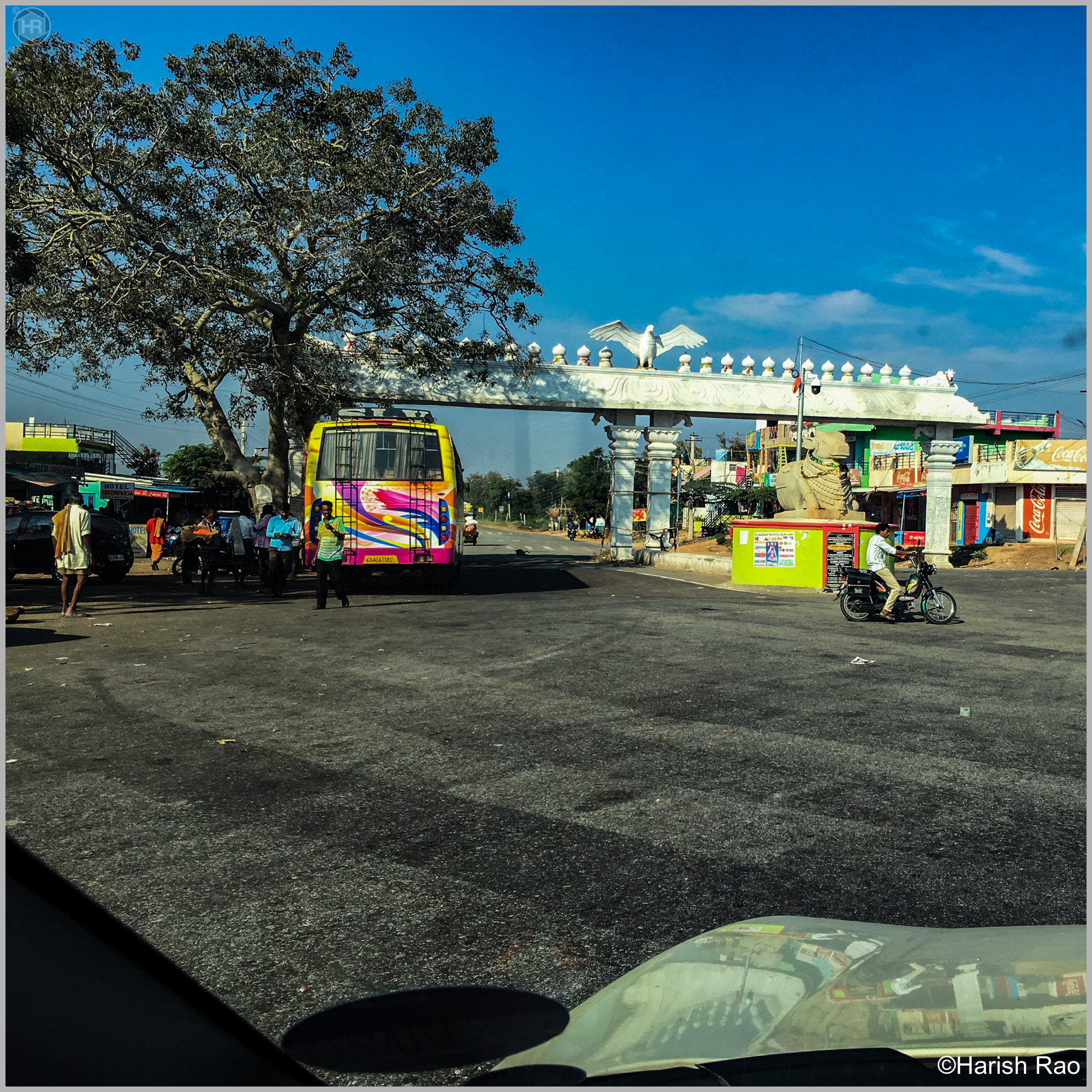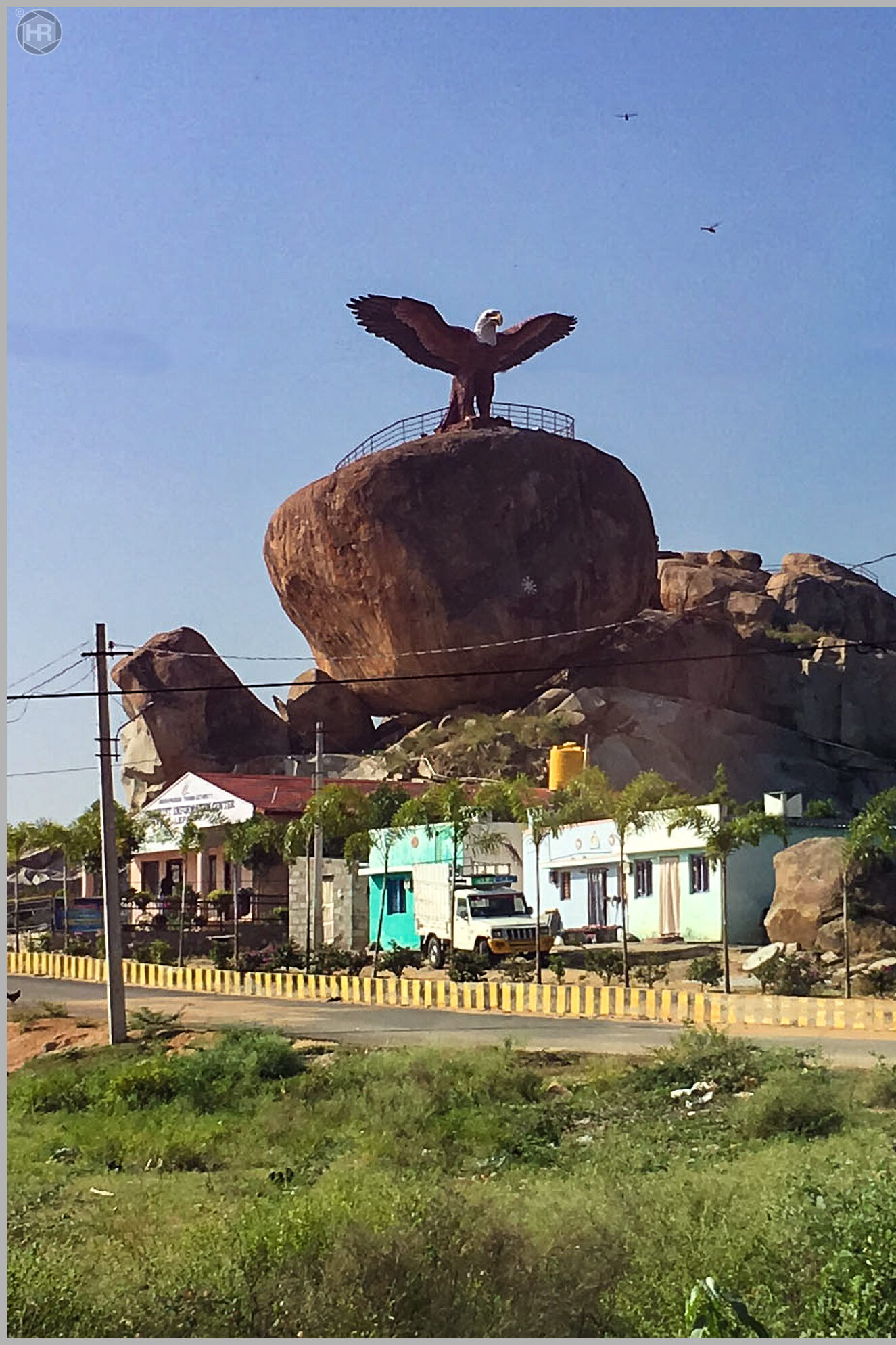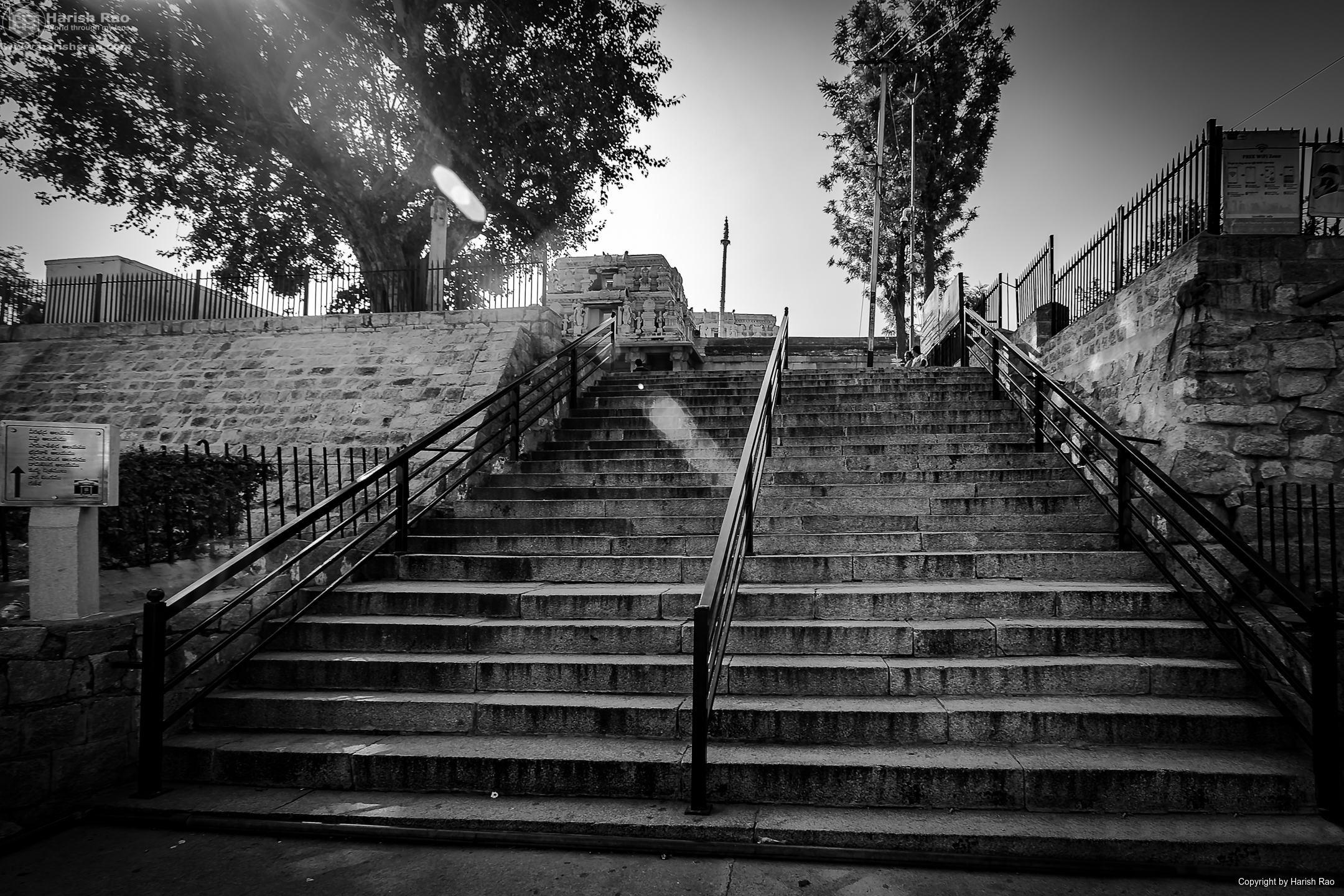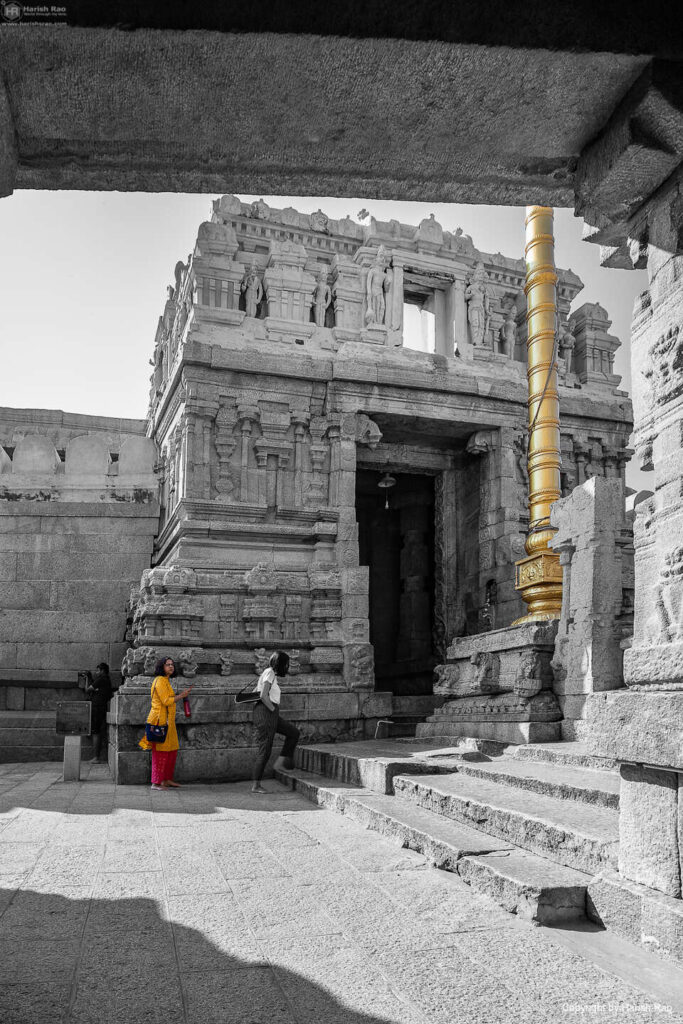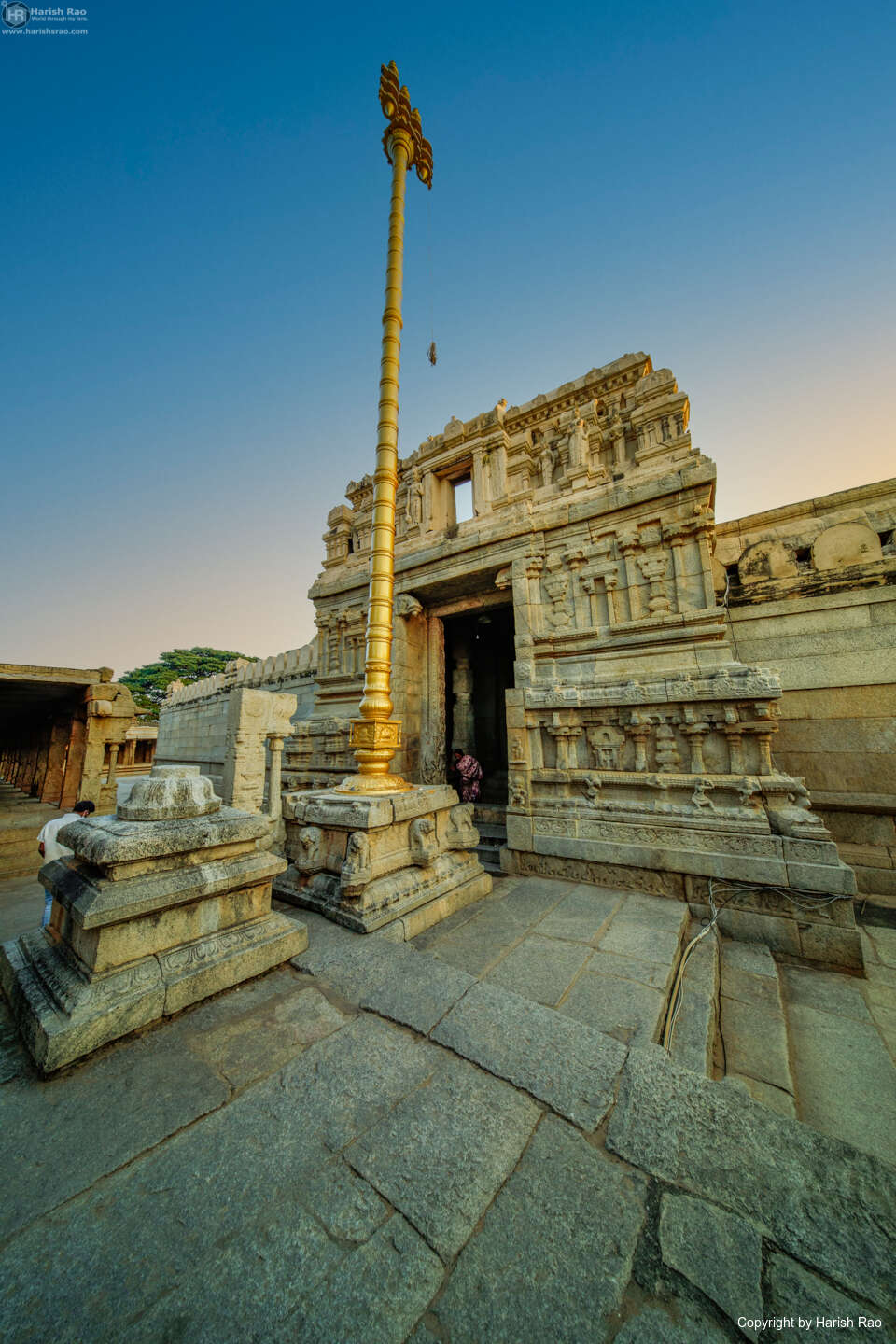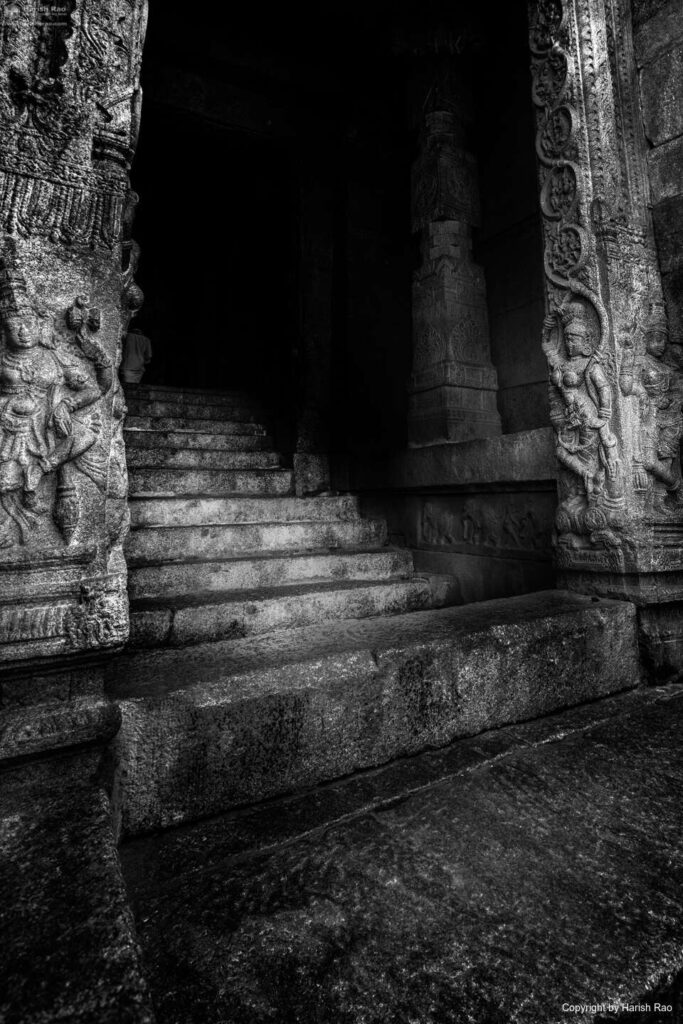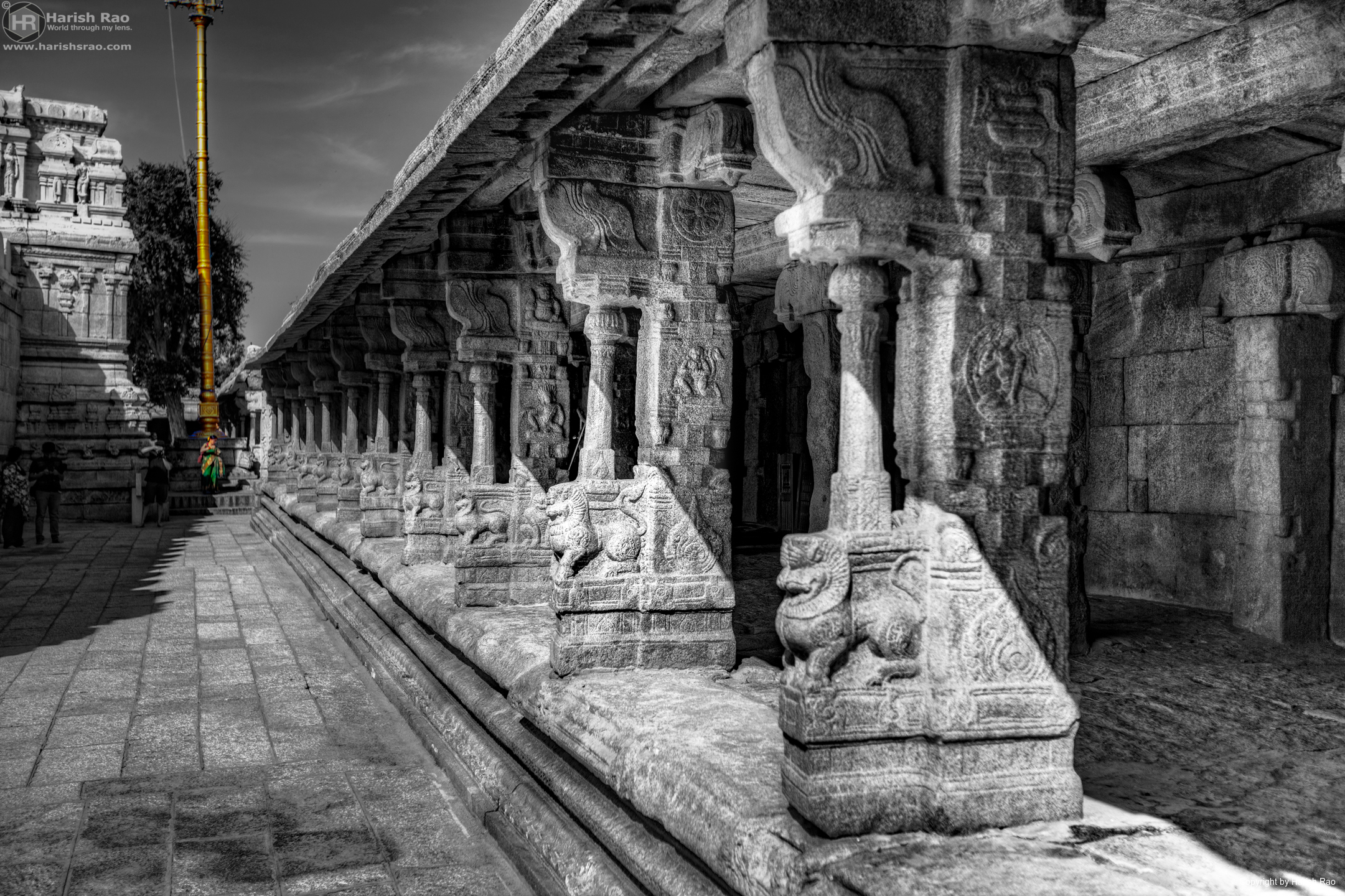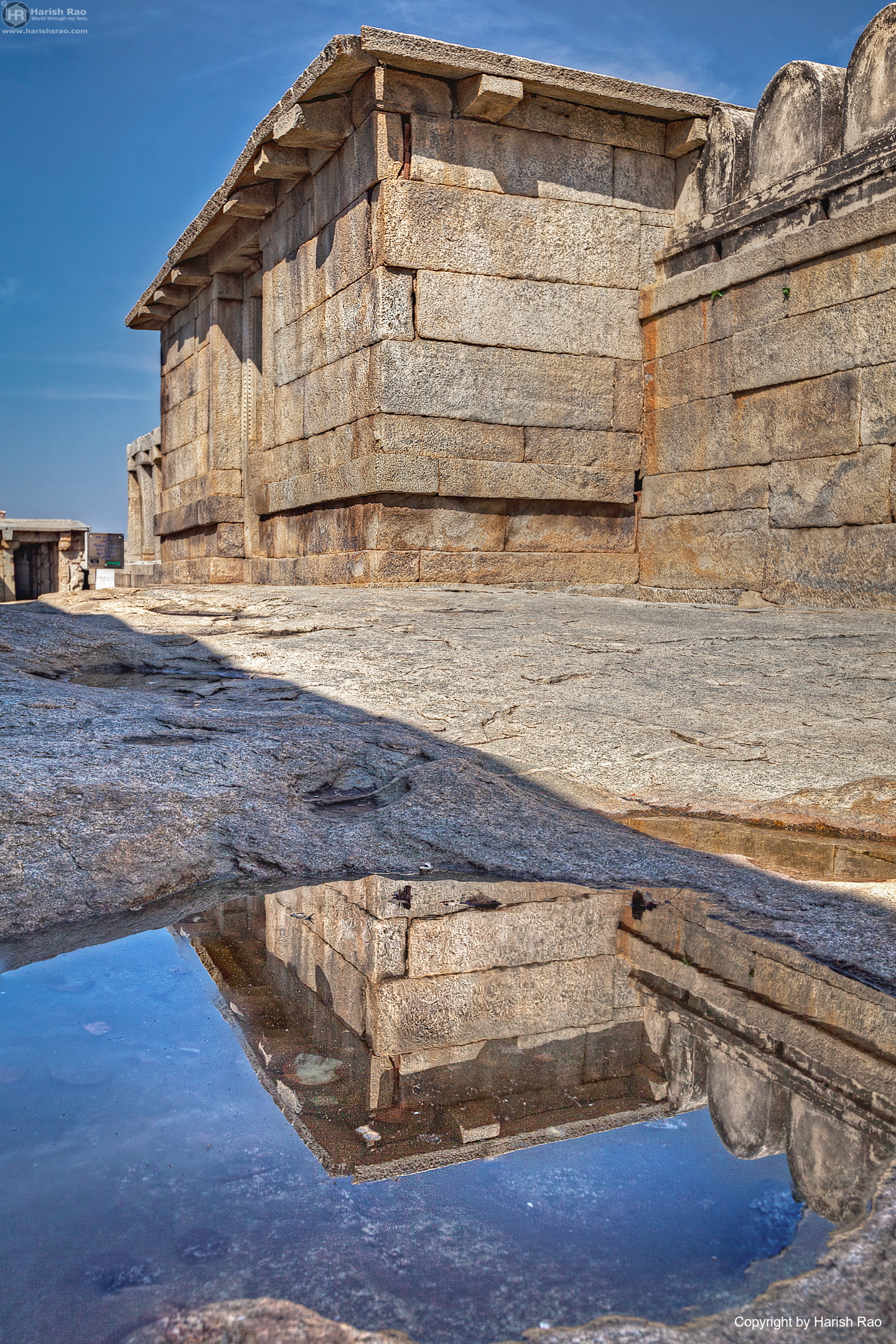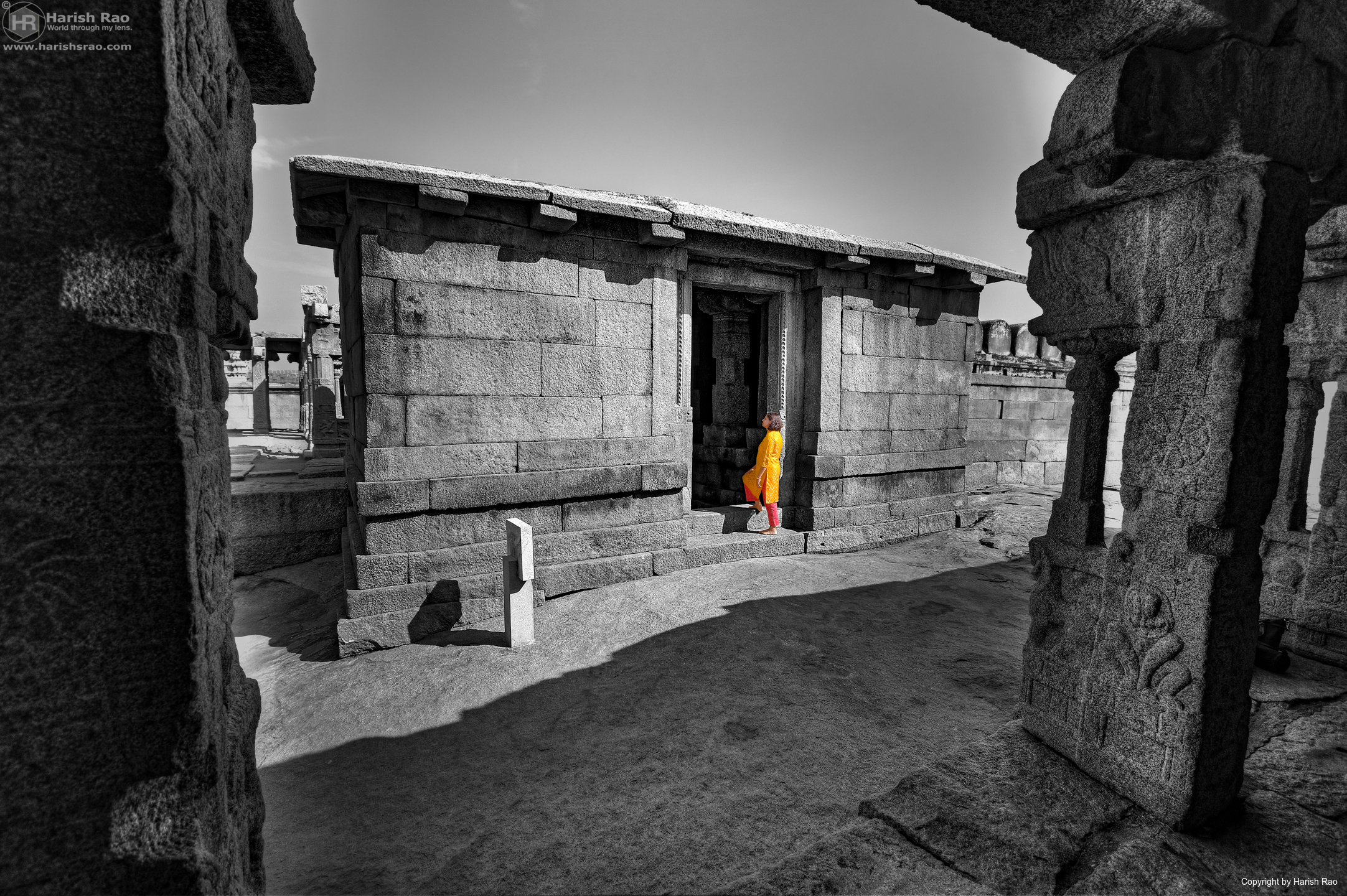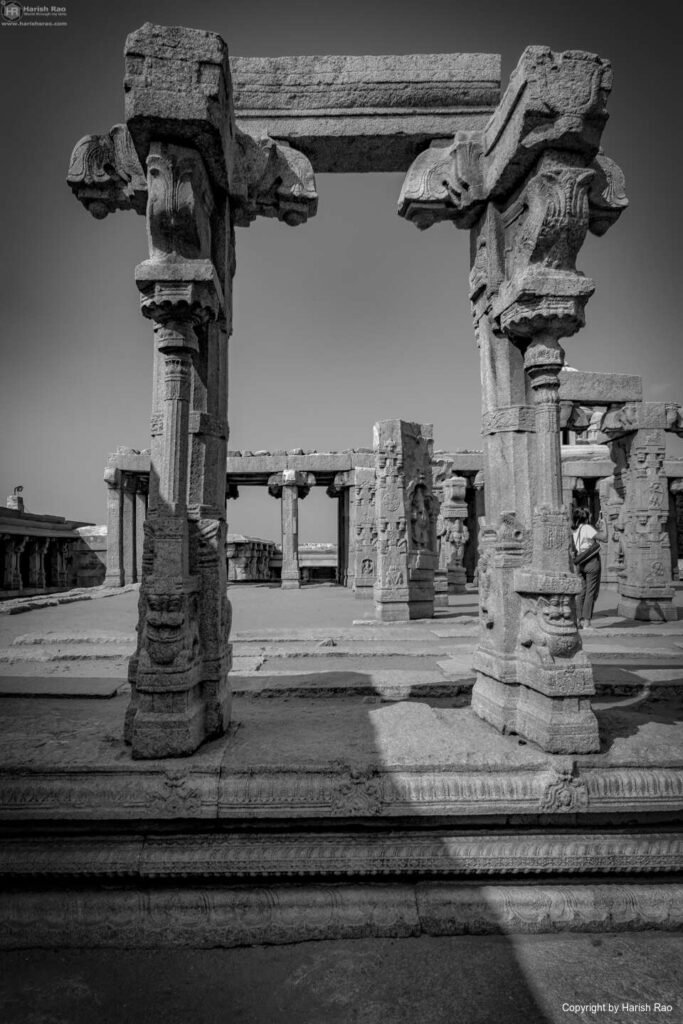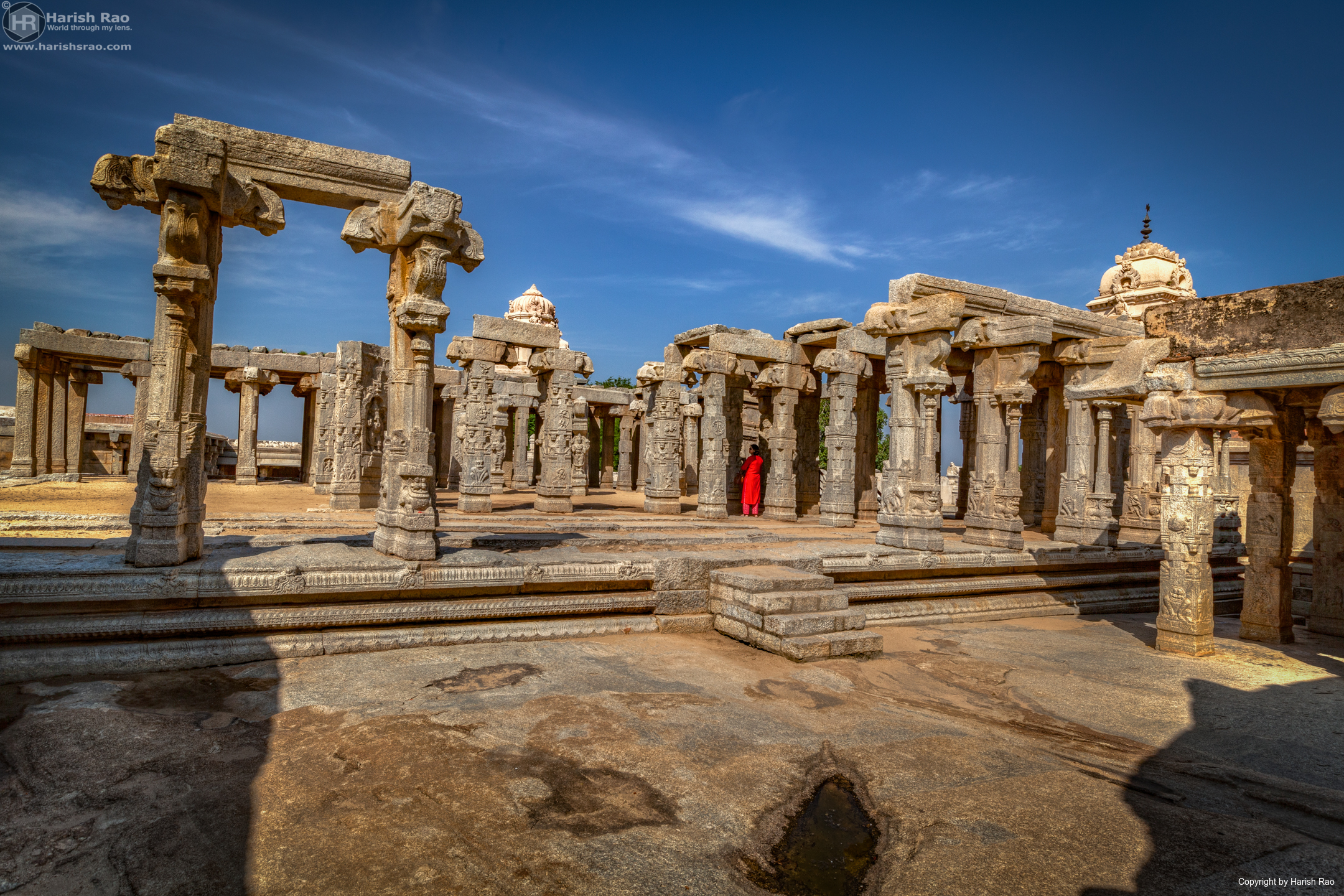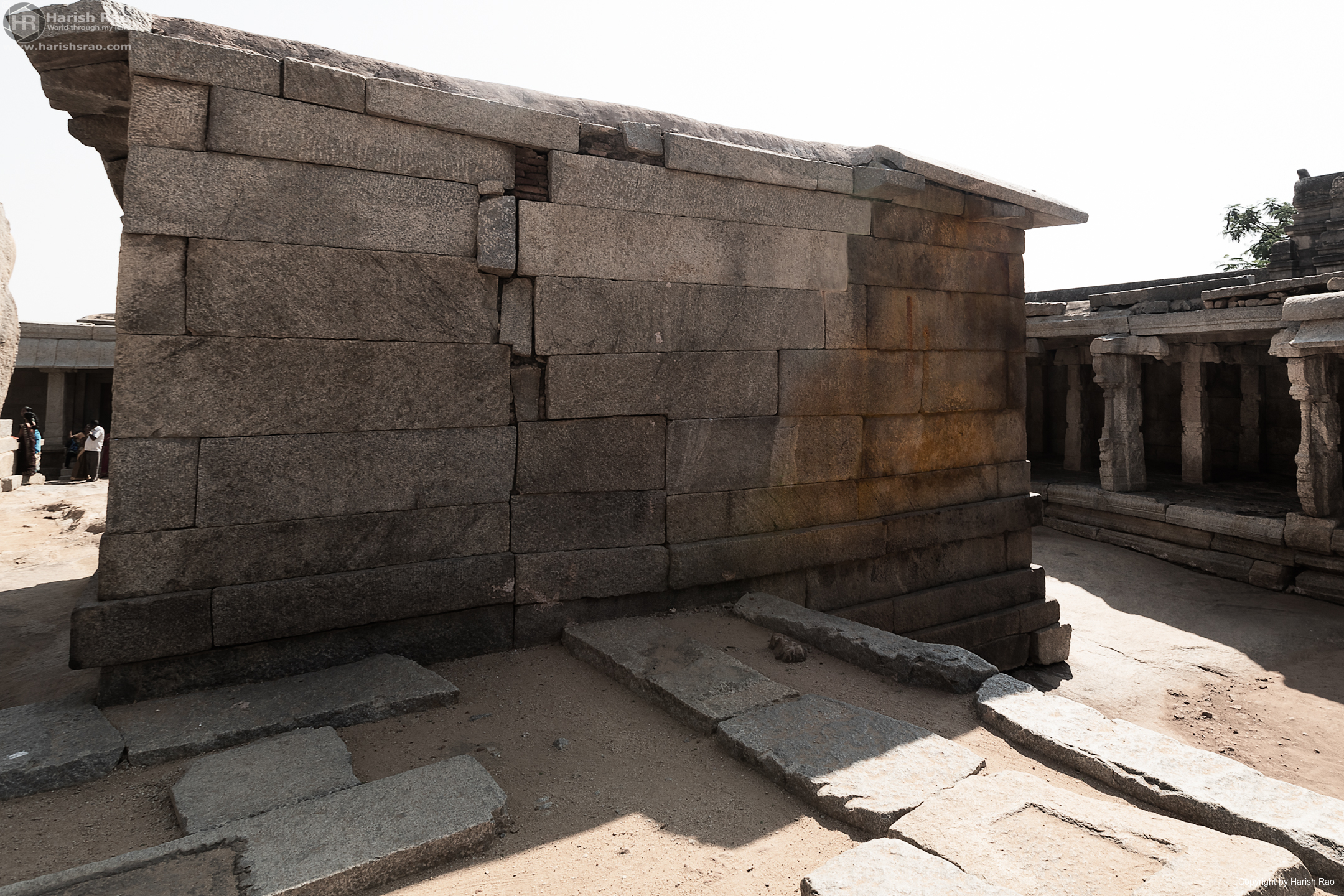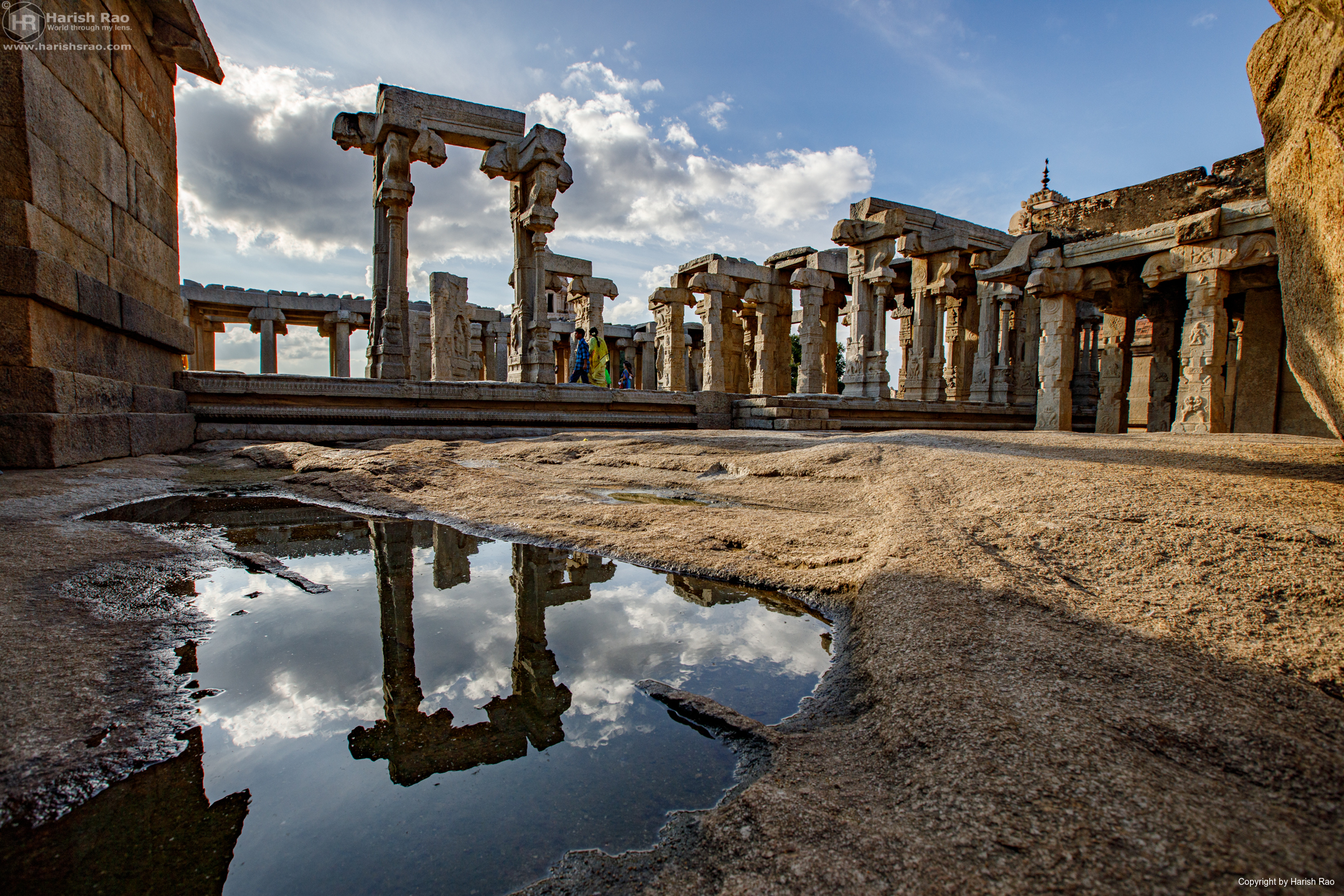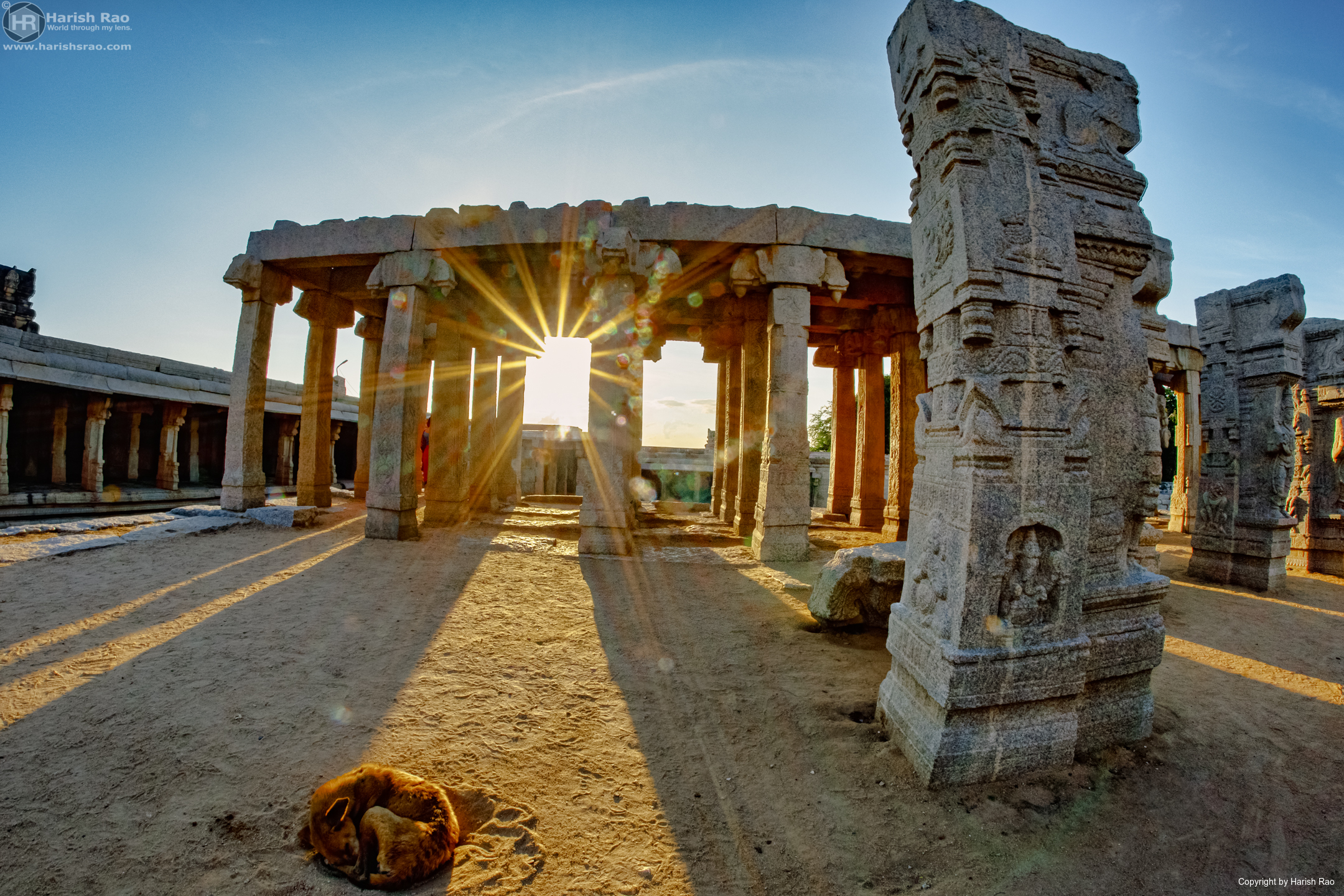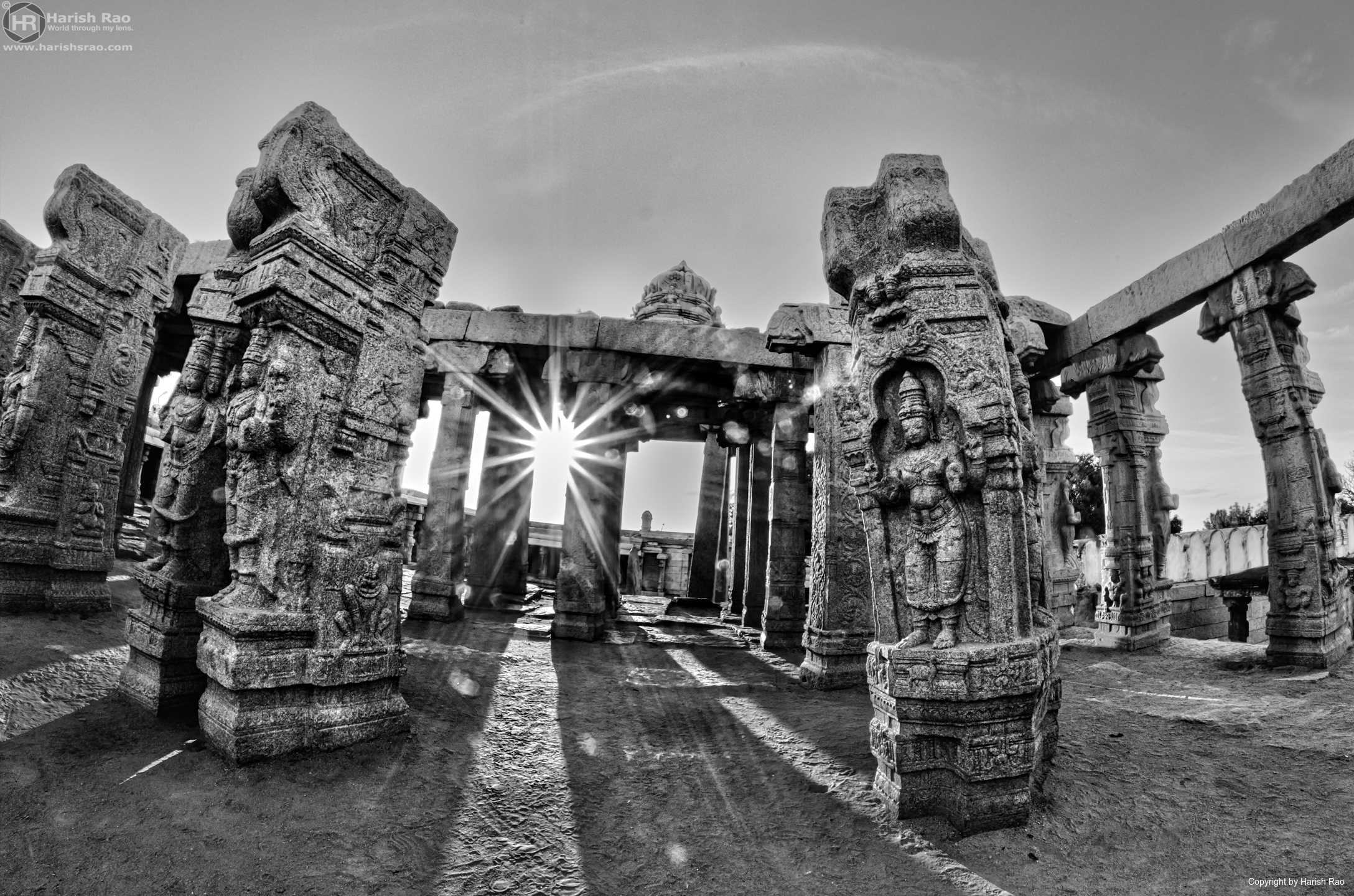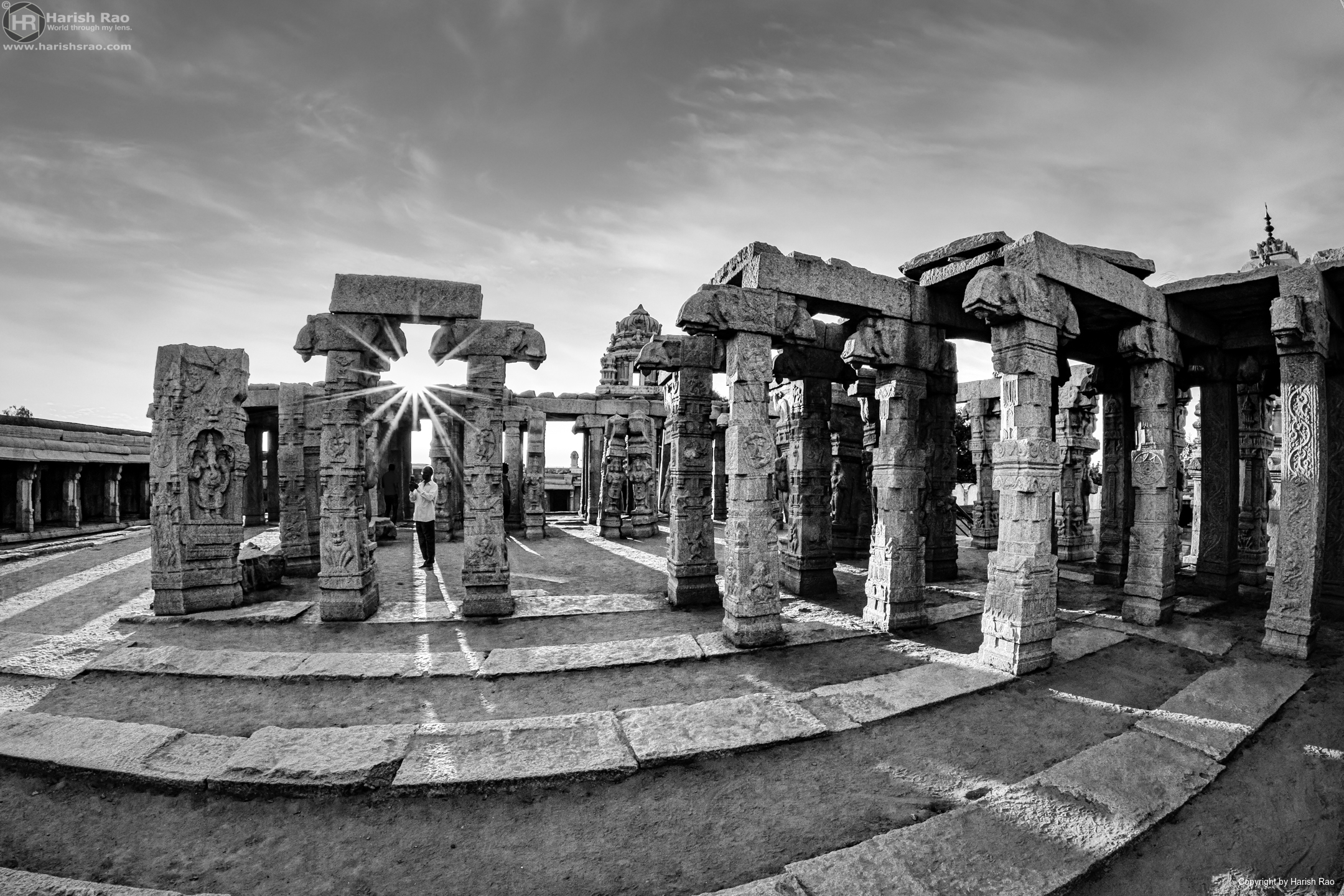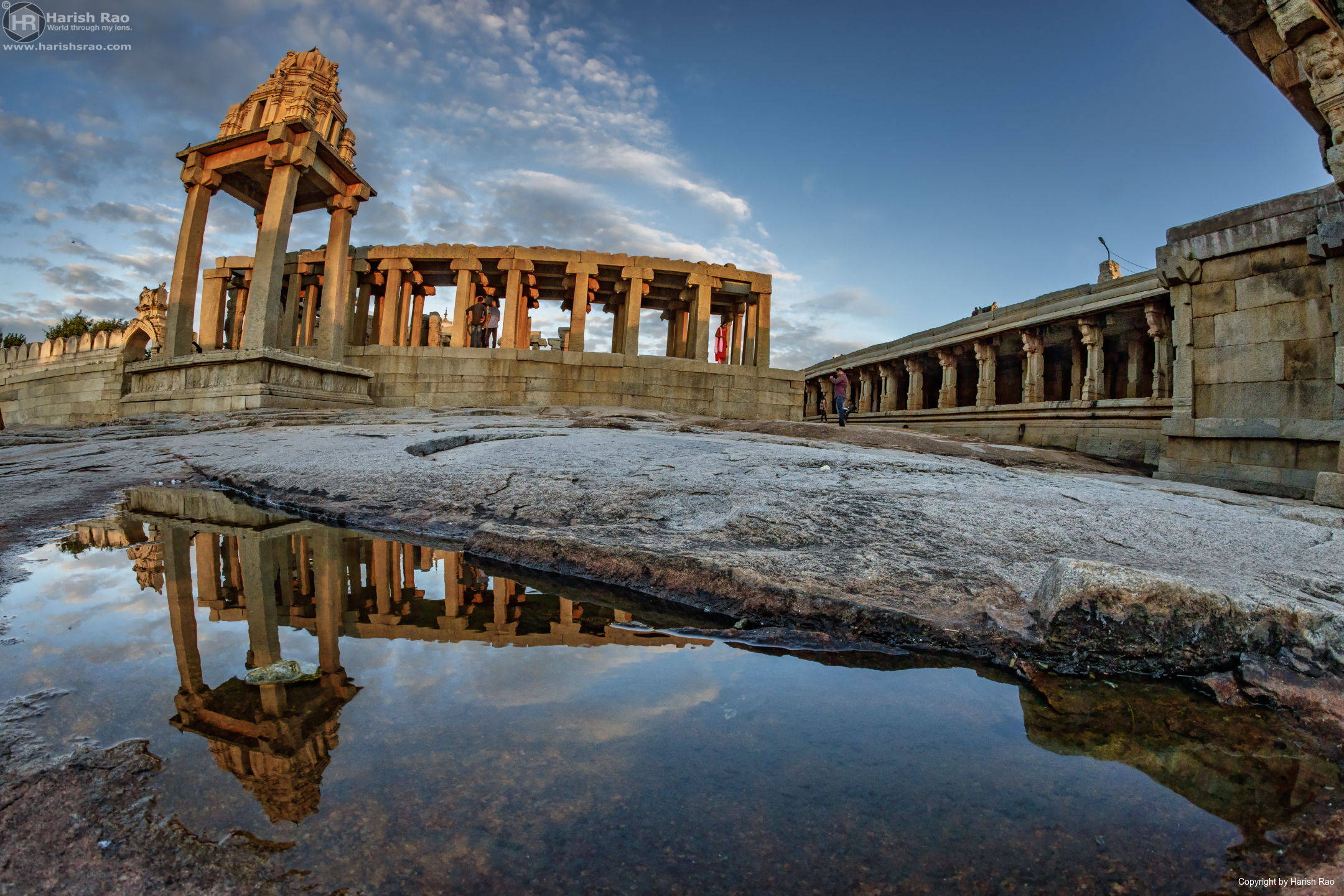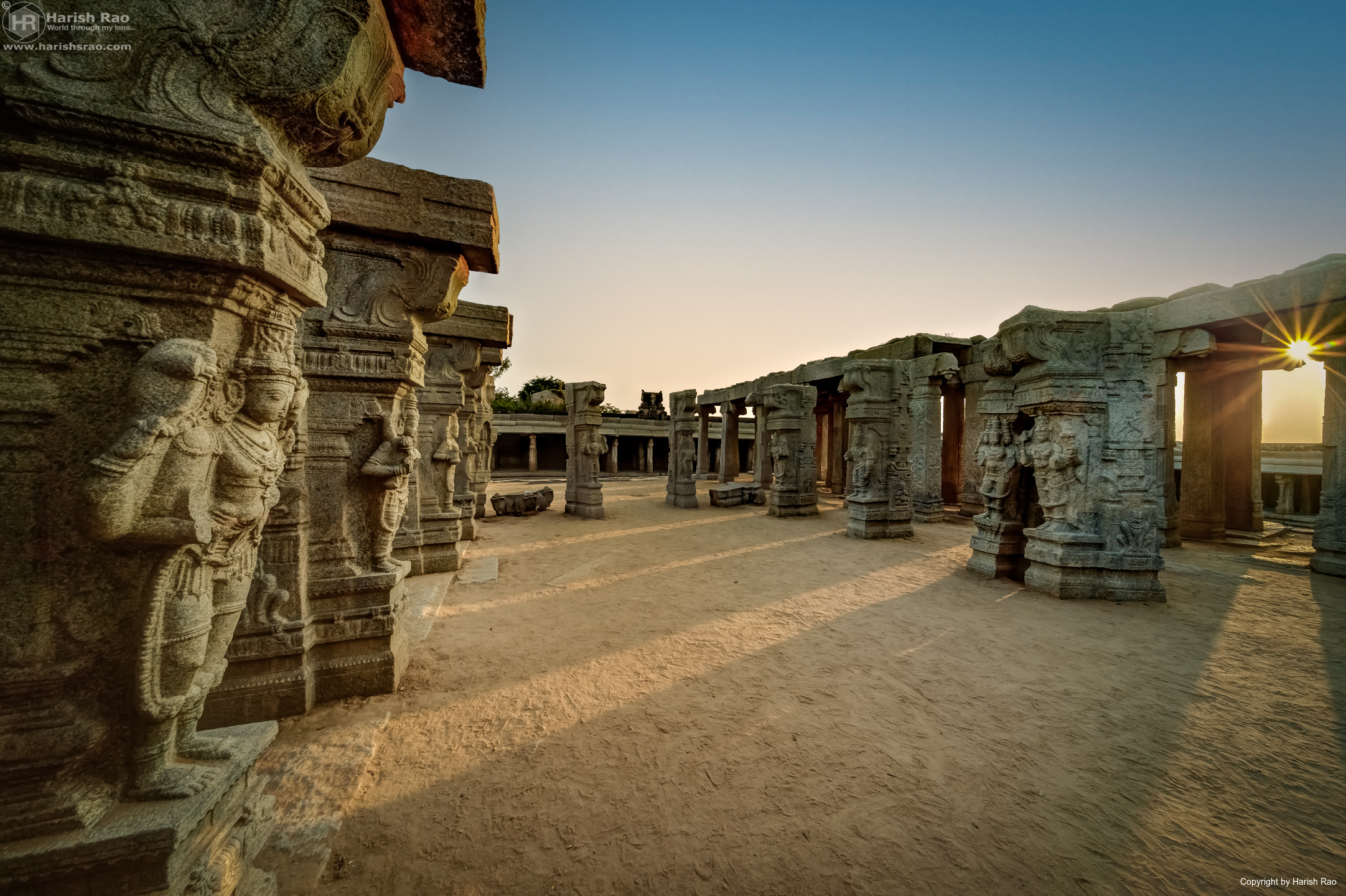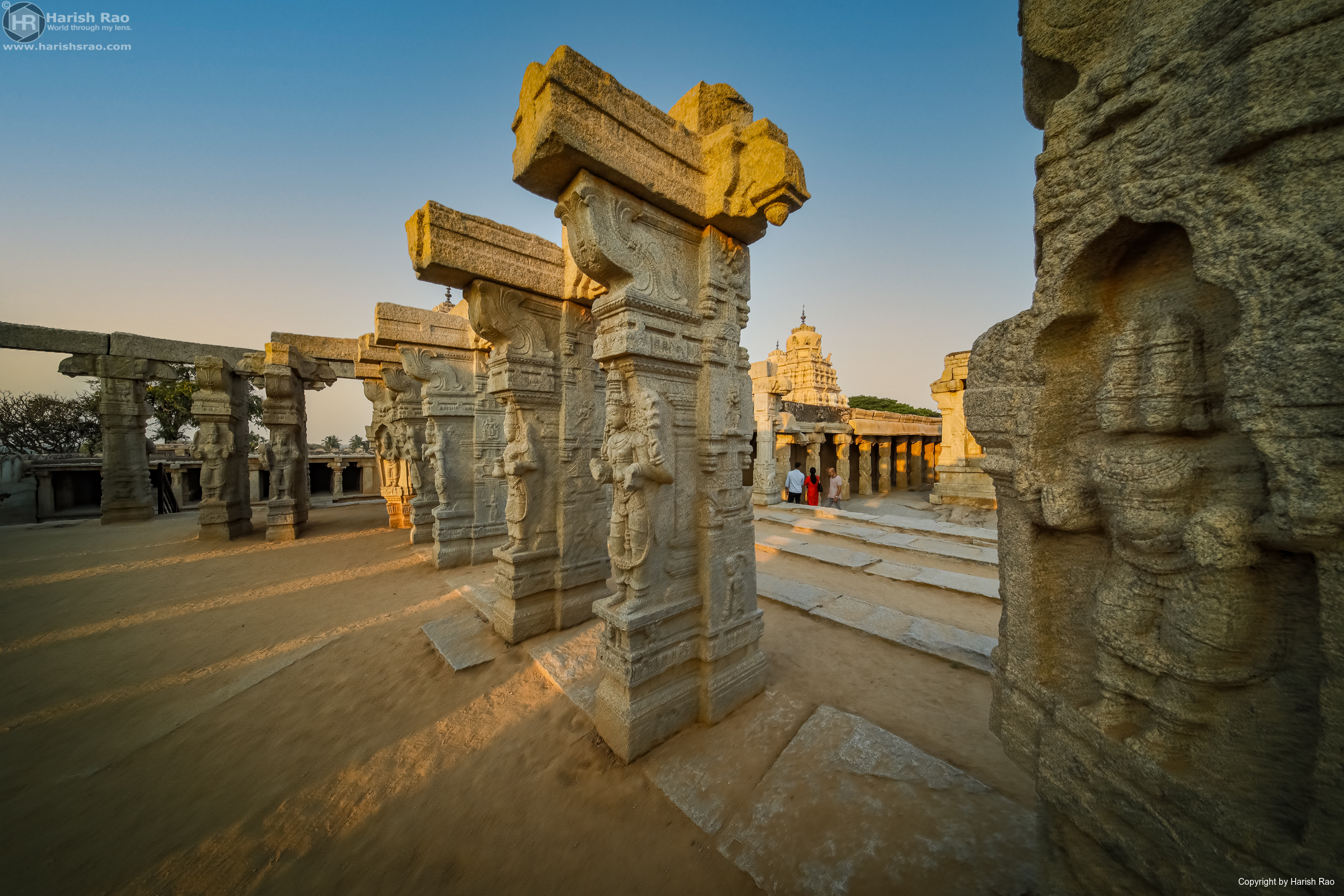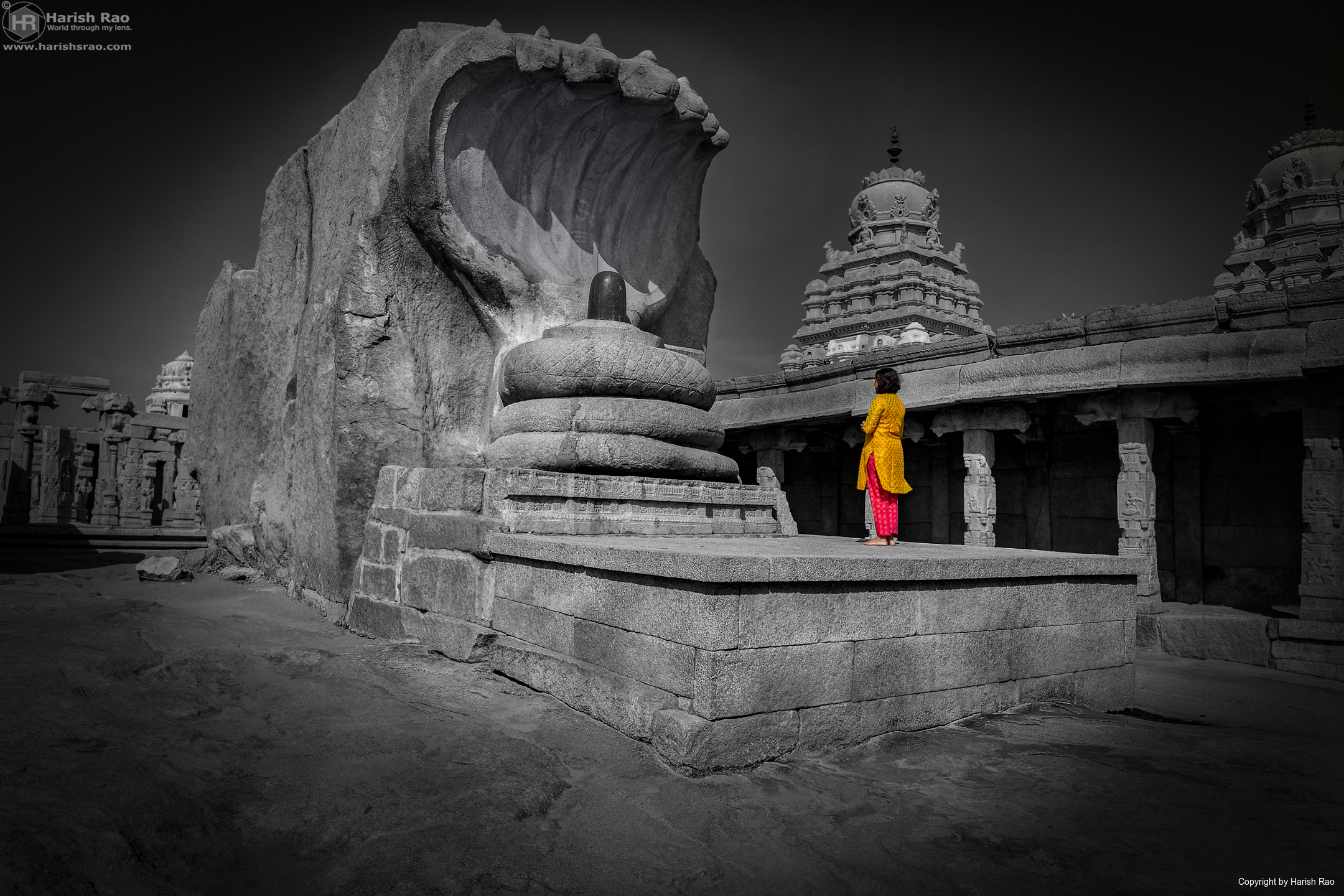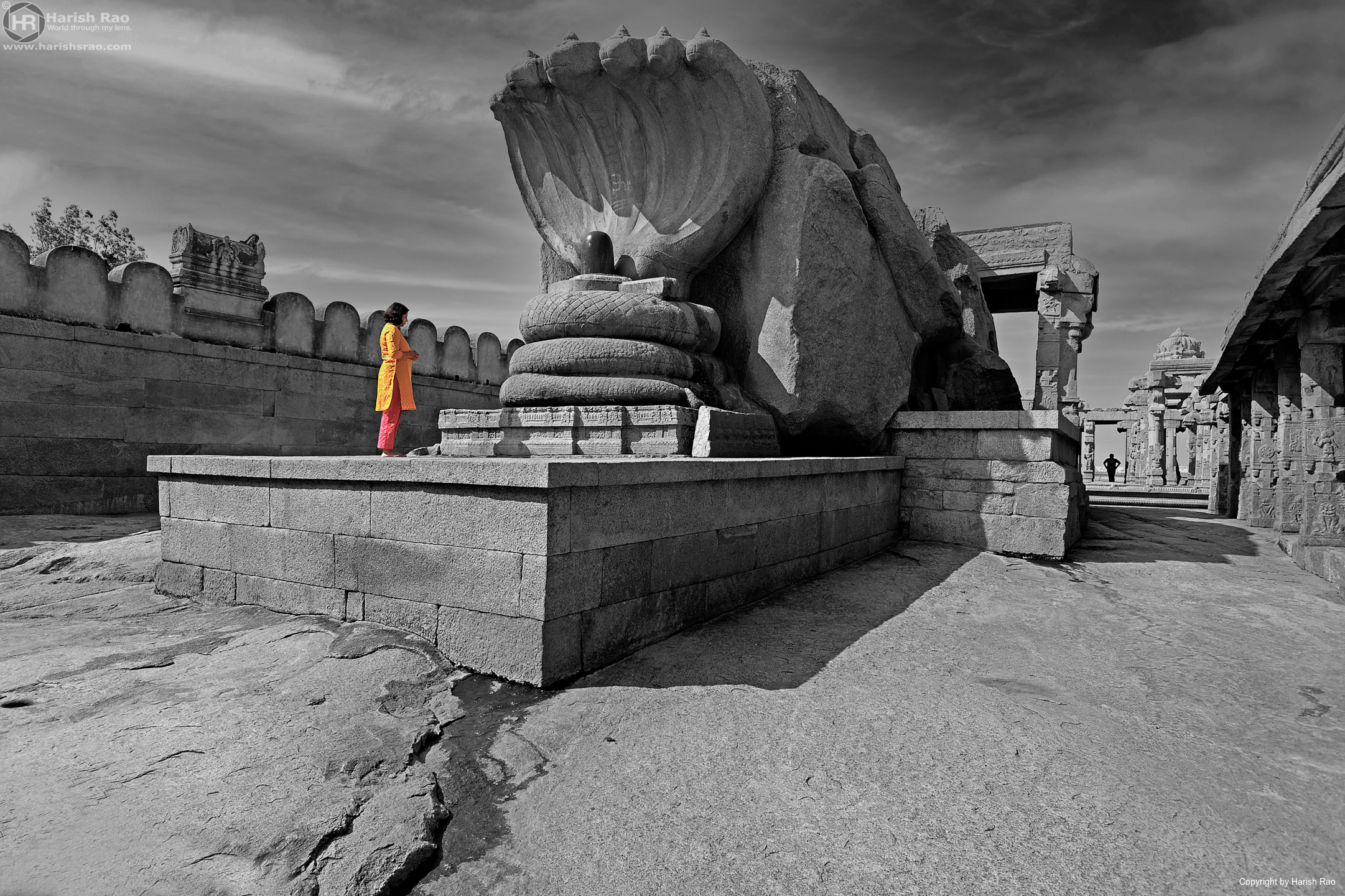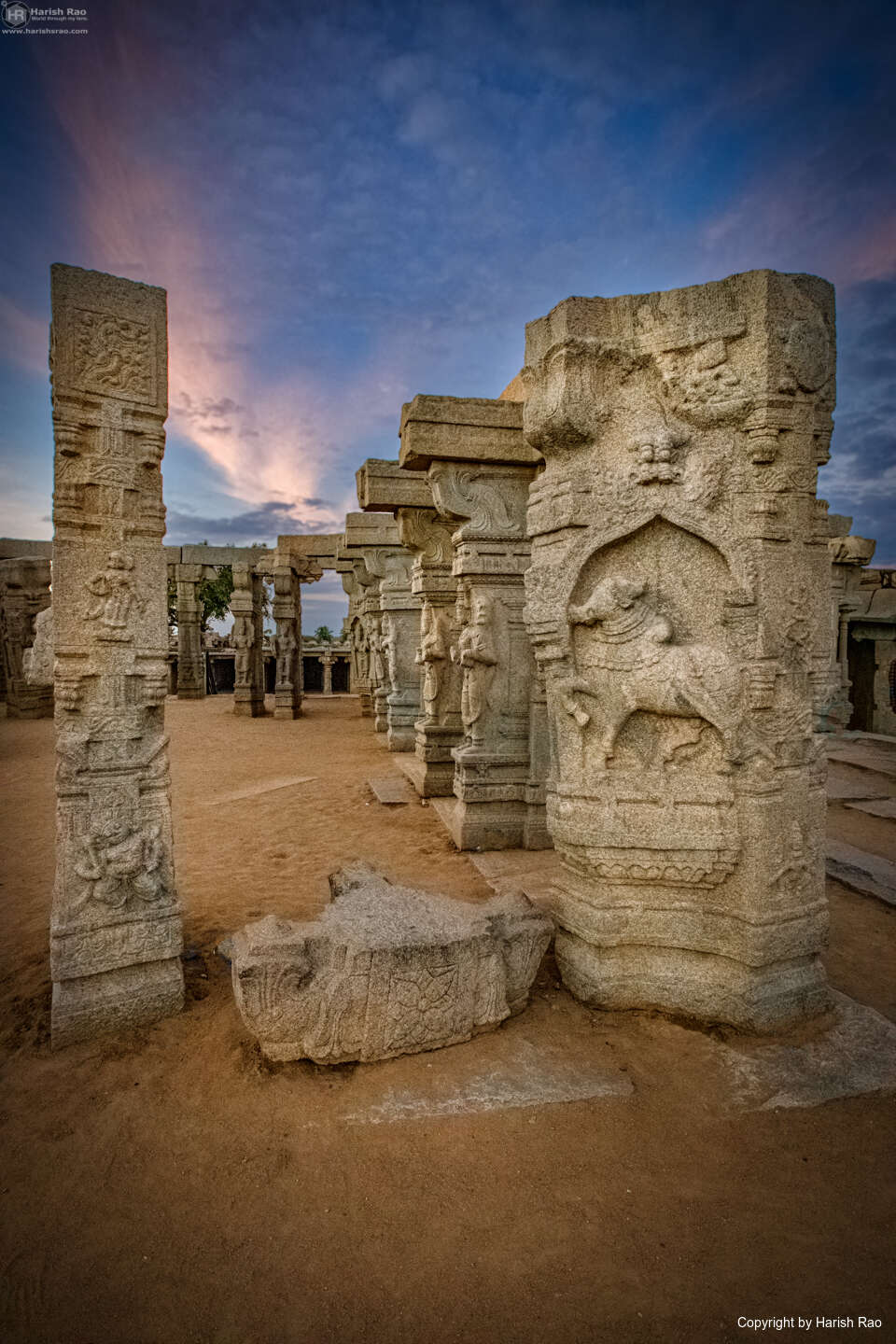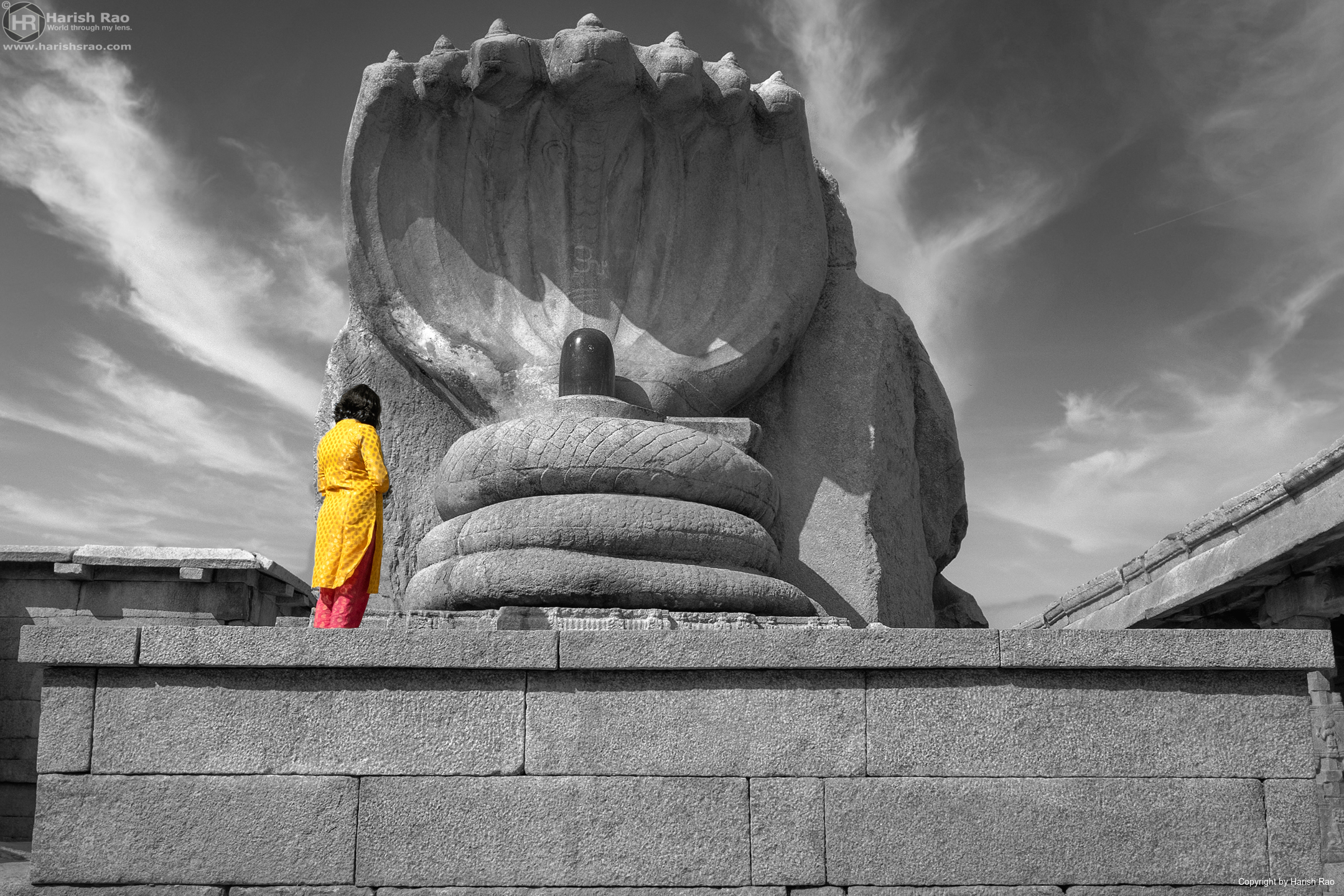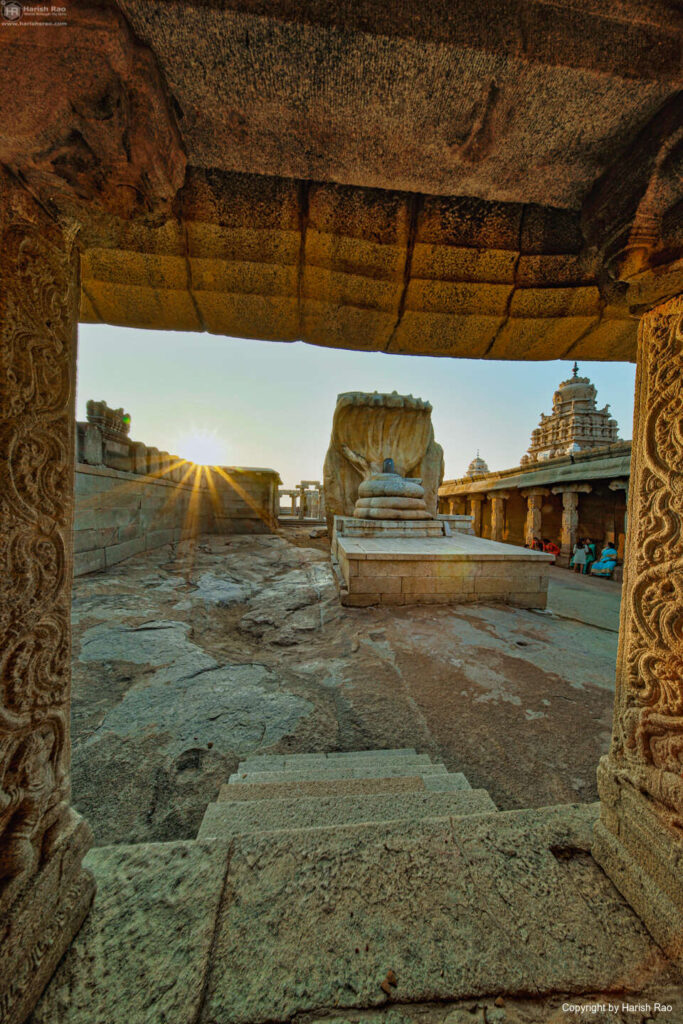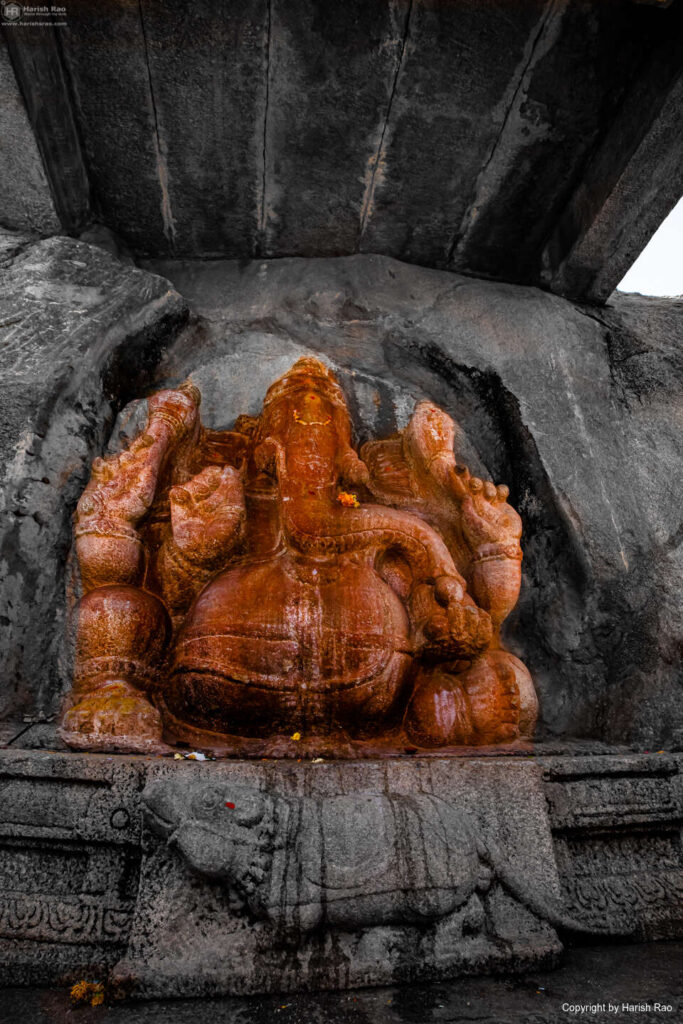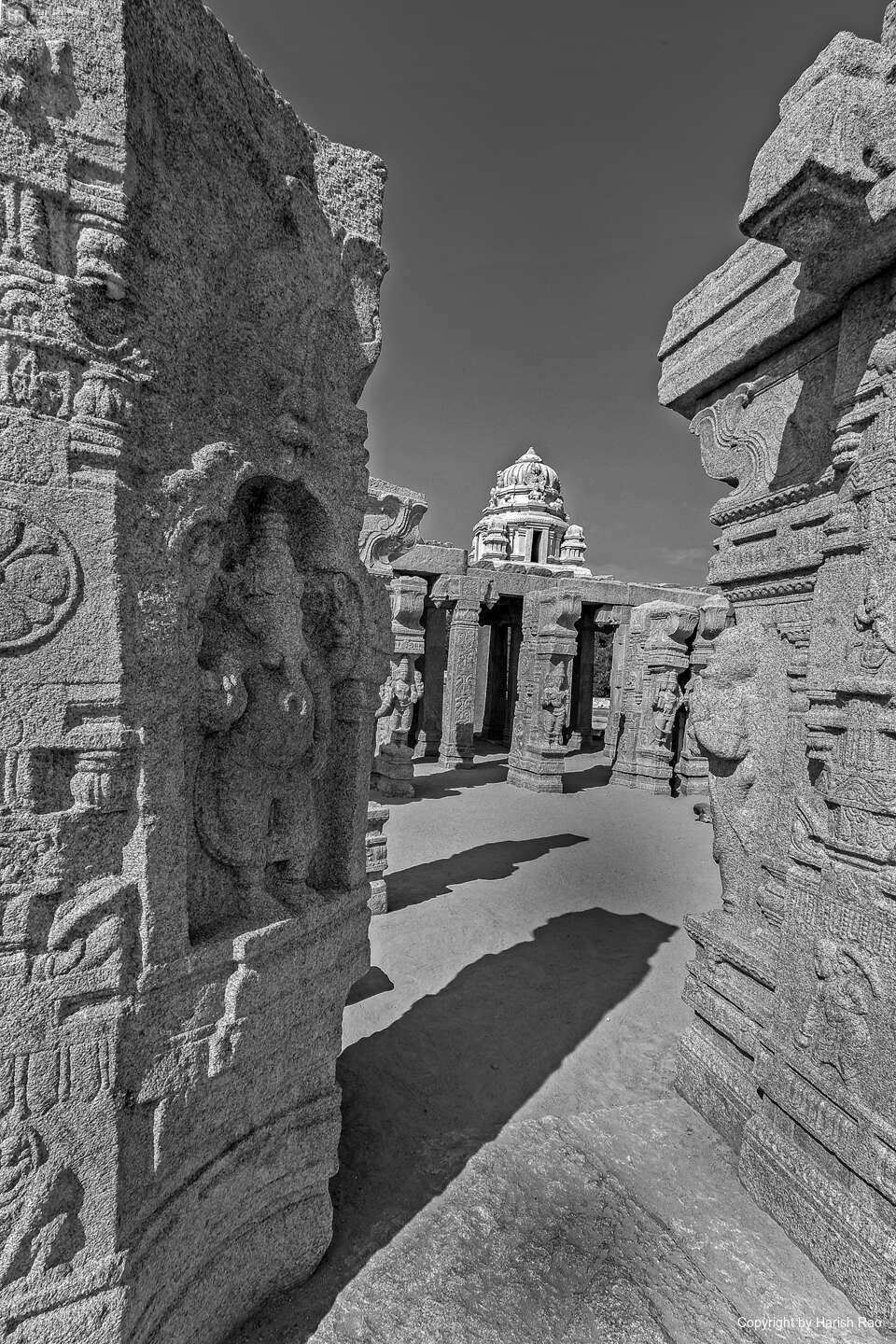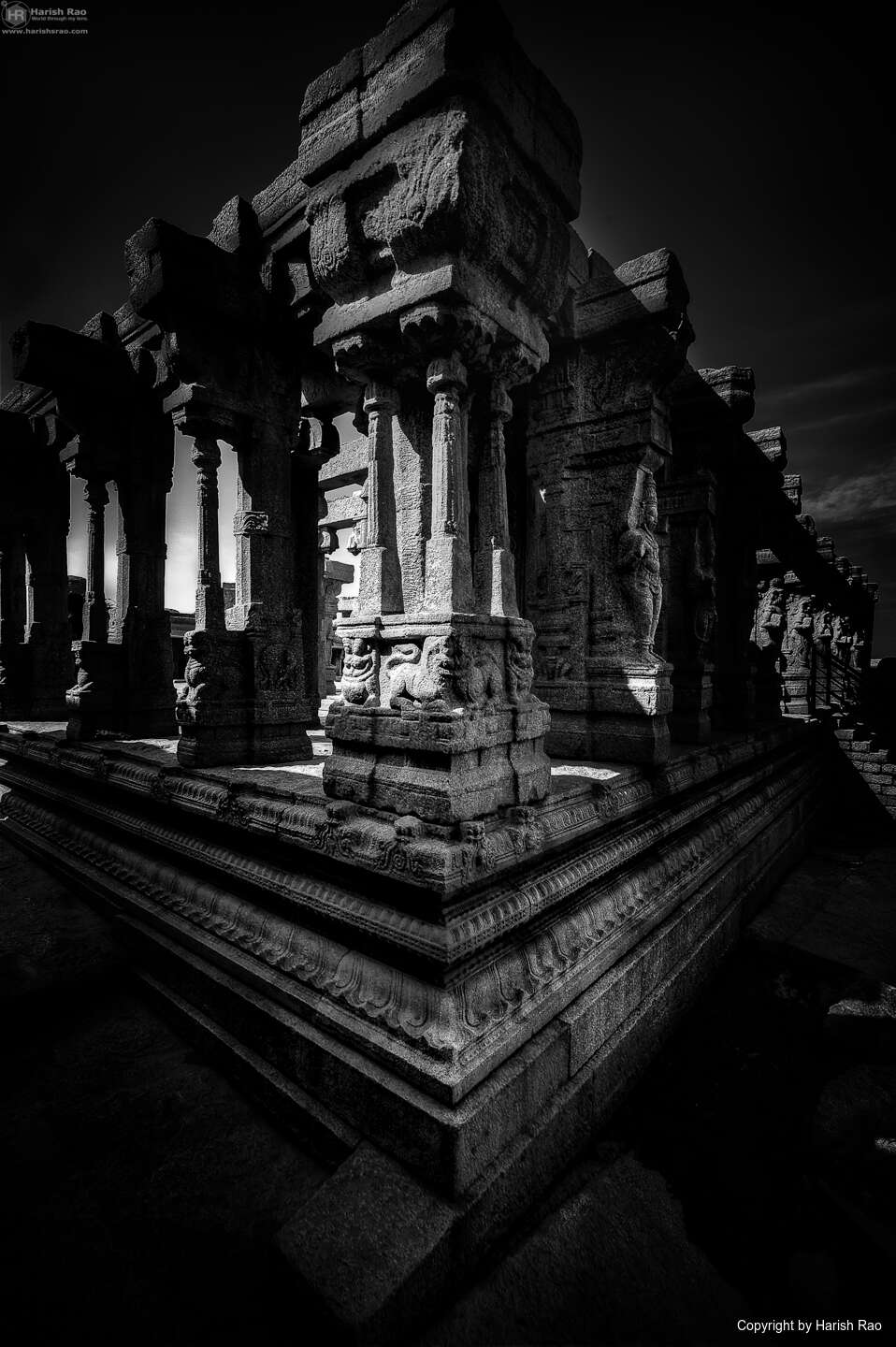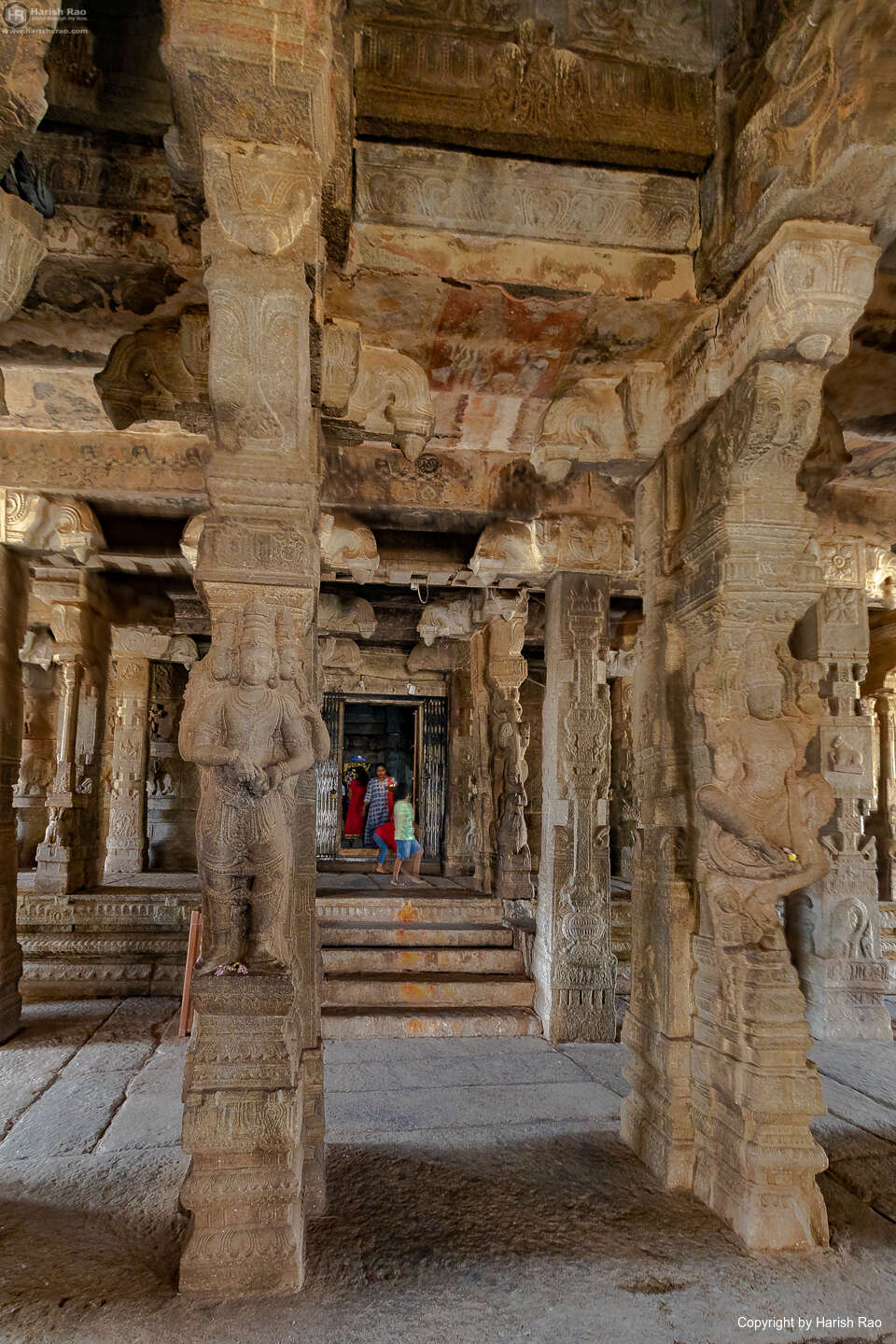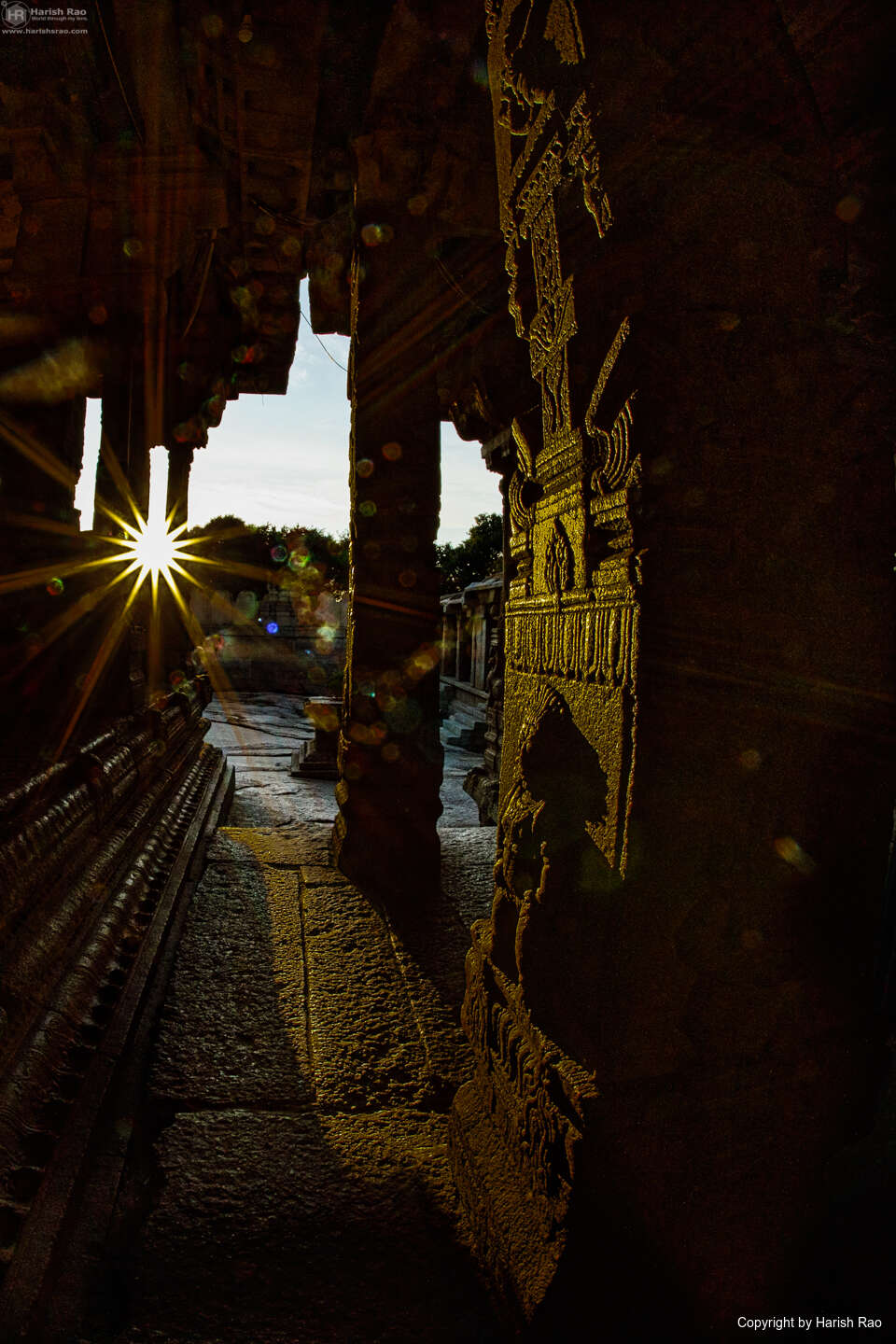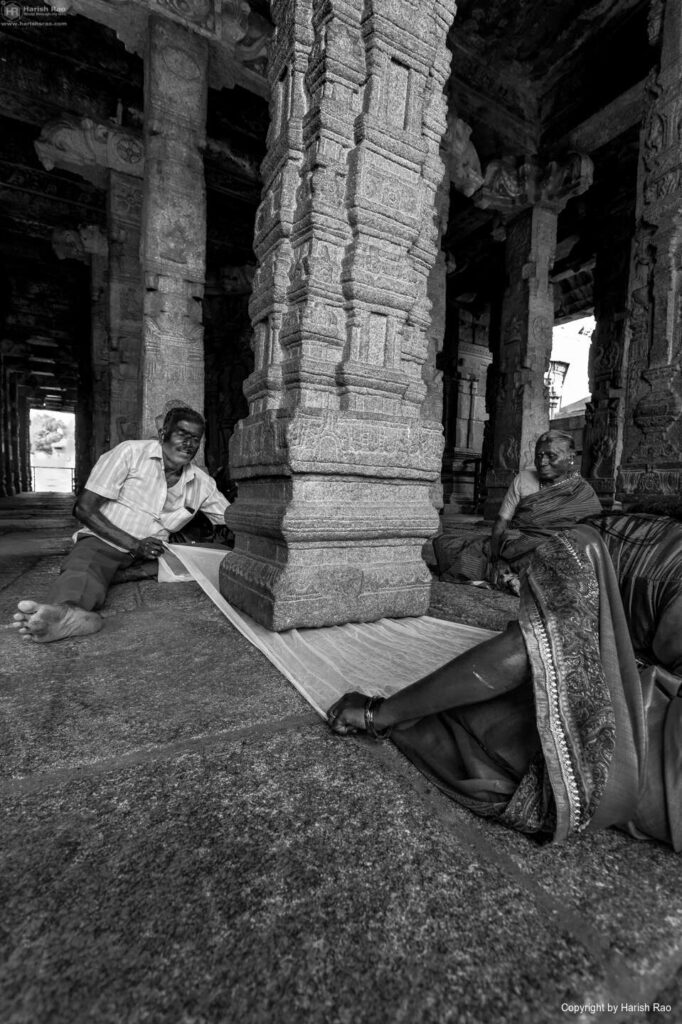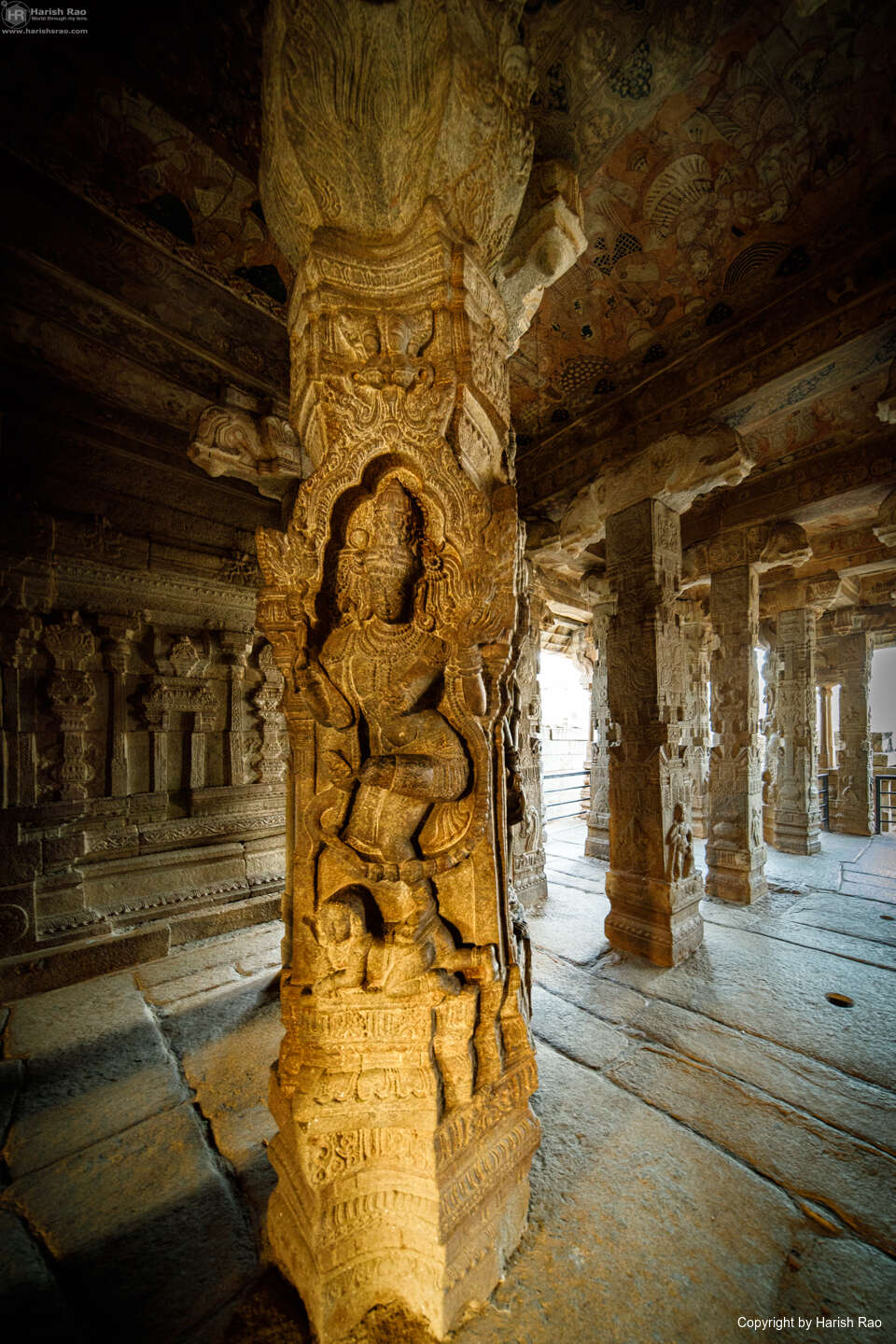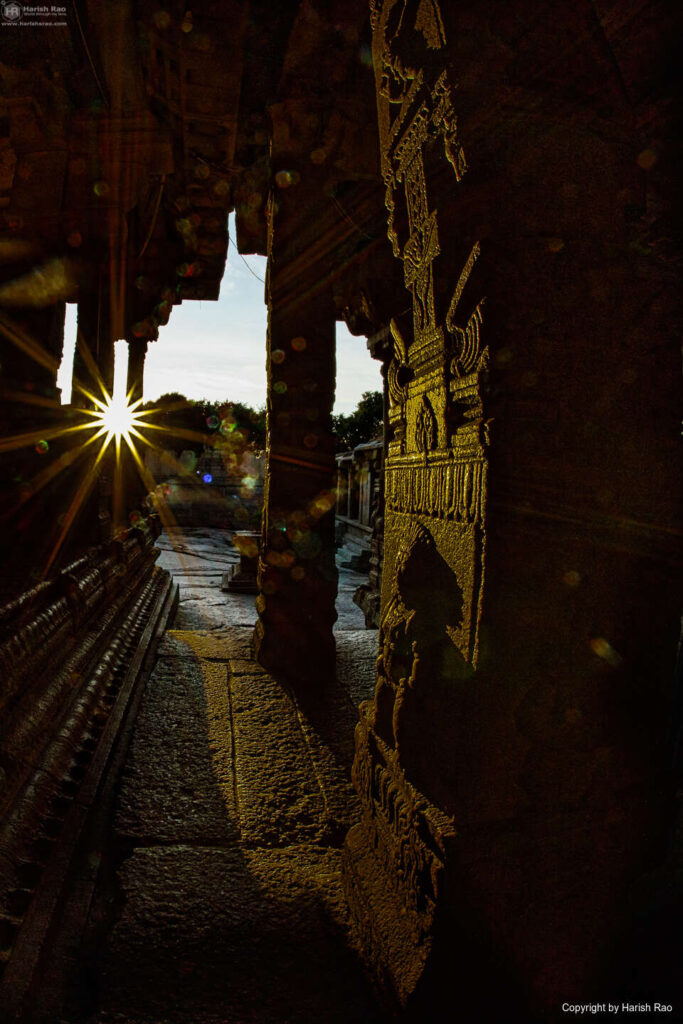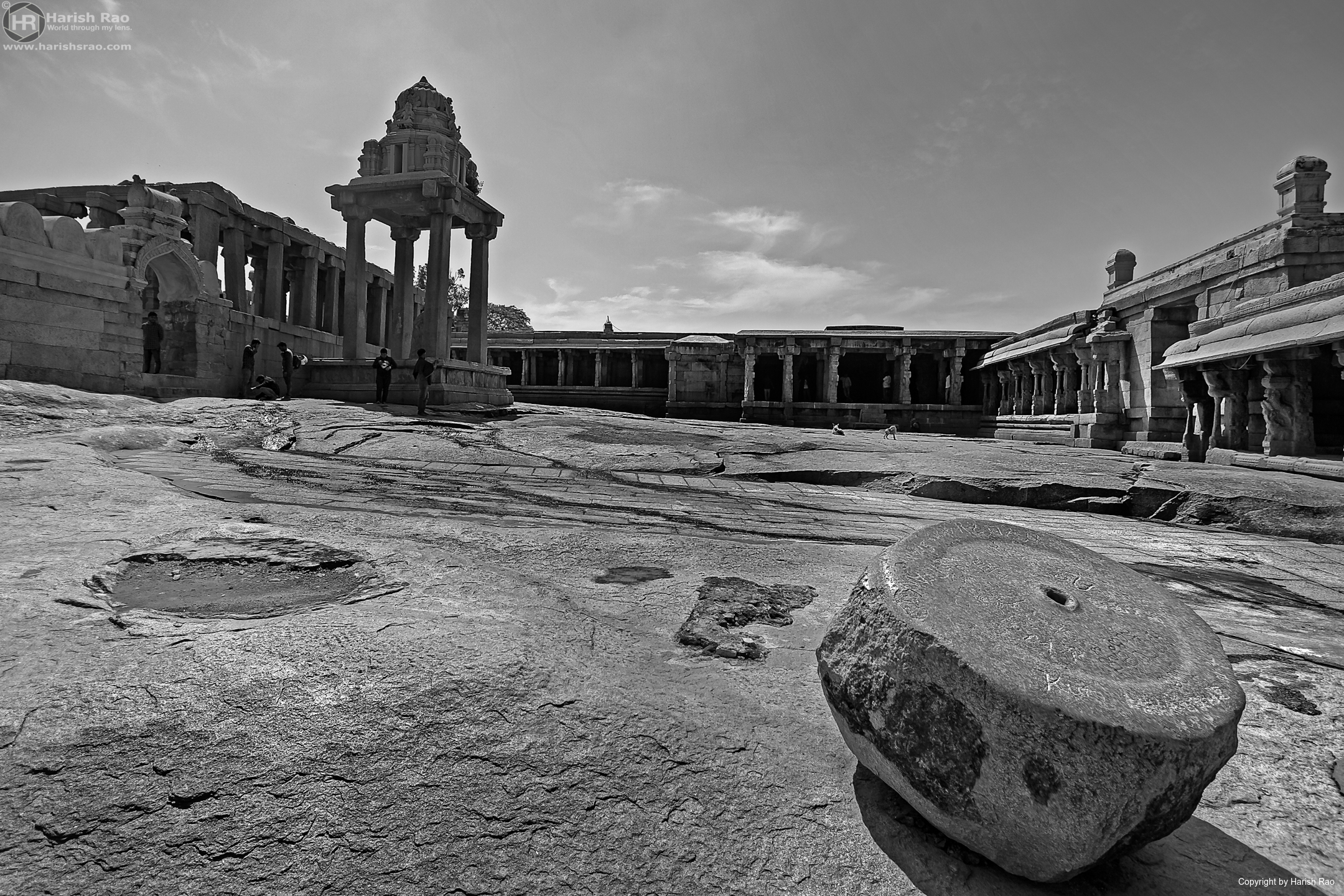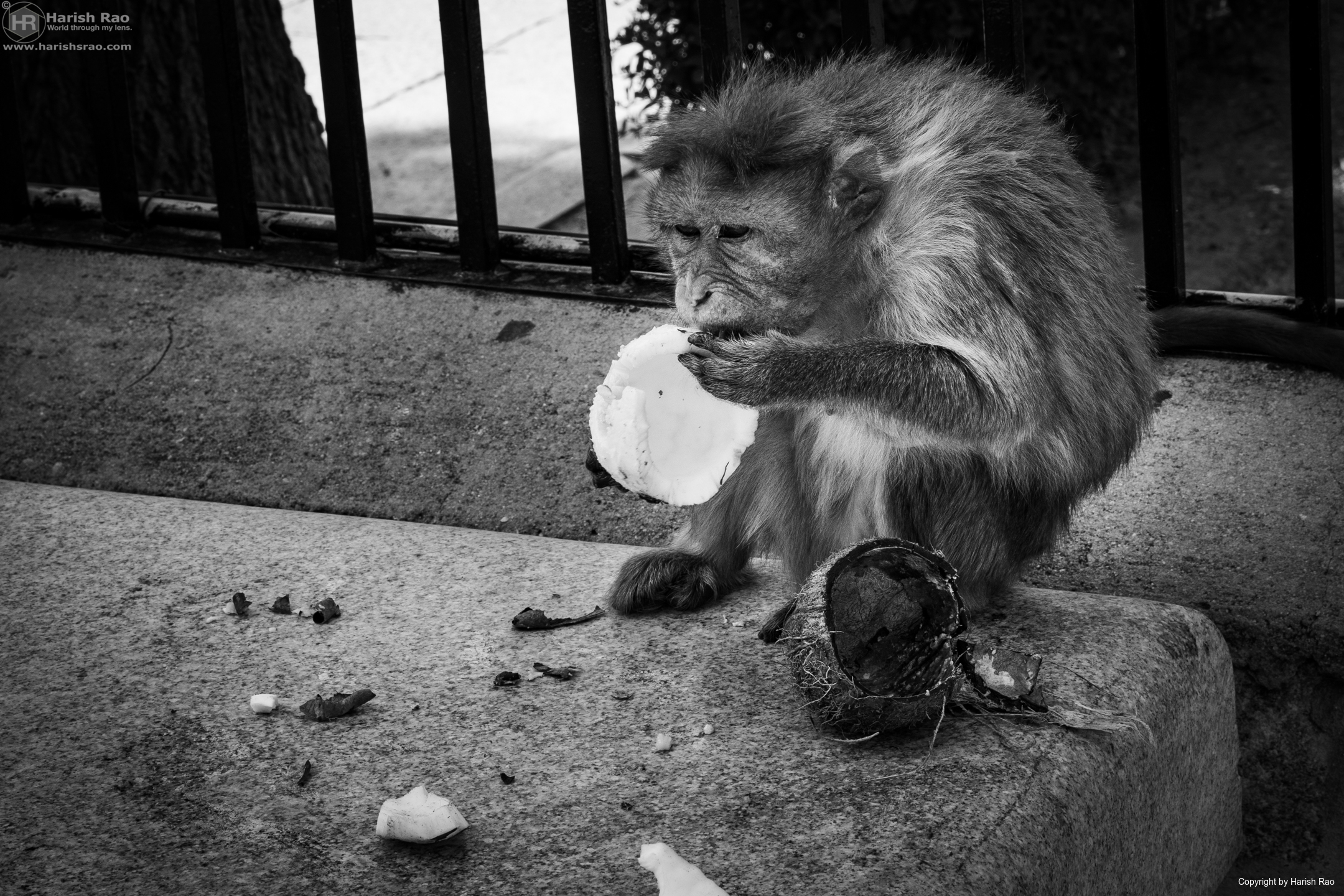
Sri Veerabhadraswamy Temple, Lepakshi.

Sri Veerabhadraswamy Temple, Lepakshi.
About Lepakshi:
Lepakshi is an ideal weekend getaway from Bangalore. It is in Ananthpur district Andhra Pradesh and is 122 Kms from Bangalore on NH44 the Bangalore Hyderabad highway.
Straight, practically empty highway good eateries like Nandi Upachar on the way makes the drive enjoyable. You can often touch speeds of 120-140 kmph. Drive safe!
The breakfast stop at Hotel Nandi Upachara is at the intersection of NH44 and the Road to Nandi Hills.
Lepakshi temple that dates back to the 16th century is a striking specimen of the Vijayanagar style of architecture. It has a huge complex where three shrines dedicated to Lord Shiva, Lord Vishnu and Lord Virabhadra are found.
Lord Virabhadra is the wrathful form of Shiva, the patron deity of the Nayak rulers.
As the another legend goes, the temple at Lepaksi was built on the spot where Jatayu fell after being injured by Ravana during the kidnapping of Sita. According to that legend, Lord Rama exclaimed, “Le, Pakshi”, meaning, “Rise, Bird”, in Telugu, seeing the fallen Jatayu, and hence leading to the name of the place.
The highway is well marked all along. Look out for this sign immediately after the Bagepalli toll booth.
‘Le pakshi’ said Lord Rama to Jatayu, the bird, asking it to get up,” says the guide a bit dramatically narrating the episode from Ramayana.”Ravana had chopped off its wings and Lord Rama found the bird fallen right here in this village. That’s why it’s called Lepakshi.
The 40 odd steps leading to the temple entrance.
The tree in front of the entrance to the Lepakshi temple is known as the “Nandi Tree” or “Kathal Vriksha.” It is a large and ancient banyan tree (Ficus benghalensis) that stands majestically near the entrance of the temple complex.
Legend has it that this tree has been there for centuries and has witnessed the rise and fall of empires. It is said that during the construction of the Veerabhadra Temple, artisans used this tree as a reference point for their measurements and alignments. Over time, the tree has become an integral part of the temple’s surroundings, offering shade and a sense of tranquility to visitors.
The Nandi Tree holds cultural and religious significance for the locals and pilgrims who visit the temple. It is often considered sacred and is sometimes adorned with offerings or rituals by devotees.
The presence of the Nandi Tree adds to the overall ambiance and charm of the Lepakshi temple complex, making it not just a place of historical and architectural interest but also a serene and spiritually uplifting destination.
The temple has been built on the southern side of Lepakshi town, on a low altitude hillock of a large exposure of granite rock, which is in the shape of a tortoise, and hence known as Kurma Saila.
The incomplete Kalyana Mandapam was started after the completion of the other parts of the temple. Unfortunately, before the construction could be completed, the King Achyutaraya died. As he had no sons, his son-in-law named Ramaraya was crowned the King. Virupanna had gone to the treasury to take money to continue to construction. The new King, being unaware of the sanctioned temple, was deceived by Virupanna’s enemies who told him that he was taking the money for his personal use. The King ordered the soldiers to remove Virupanna’s eyes. Virupanna, on hearing this, decided to remove them on his own rather than facing humiliation. He removed them and threw them on a wall in the temple. The blood stains still remain on the wall today as a mark of treachery.
The Kalyana Mandapam bears the sculptures of Shiva and Parvati and other deities who were attending their marriage.
Behind the main temple, on the south-east corner of the inner enclosure is a mandapa, near which, on a granite base, there is a magnificent rock-cut sculpture of a huge serpent with three coils and seven hoods.
Legend says that this sculpture was cut out by the artisans within an unbelievably short duration while waiting for their meals to be ready during the lunch break.
The sculpture of Lord Ganesha at Lepakshi is carved out of a single granite rock and stands as a testament to the skill and creativity of the artisans of that era. The sculpture depicts Lord Ganesha, the Hindu deity revered as the remover of obstacles, in a seated posture.
One of the striking features of this sculpture is the depiction of Ganesha’s trunk, which is intricately carved in a manner that resembles a ‘gada’ or mace. This unique representation of Ganesha’s trunk is not commonly seen in other sculptures, making it a distinctive aspect of the Lepakshi Ganesha.
It is believed to be a place where prayers and offerings to Lord Ganesha can help in overcoming obstacles and seeking blessings for success and prosperity.
The Hanging Pillar of Lepakshi is one of the most intriguing architectural wonders located in the Veerabhadra Temple complex in Lepakshi.
One popular legend suggests that the pillar was deliberately built in this manner by the artisans to showcase their superior craftsmanship and to demonstrate the temple’s architectural prowess. Another legend claims that the British attempted to dislodge the pillar from its position to uncover the secret of its suspension, but their efforts only resulted in damaging the pillar and the temple complex.
The ceiling of the hall is fully covered with mural paintings depicting the scenes from the epics, the Mahabharata, the Ramayana, and the Puranas along with the life sketches of the benefactors of the temple.The colour scheme consists of vegetable and mineral colours of yellow, ochre, black, blue and green blended with lime water; the background is generally painted in red colour
Like in most temples, you can find the monkeys at Lepakshi too. The graciousness of the devotees who are kind enough to offer the coconuts or bananas attract the monkeys to the temples .
The Lepakshi Temple stands as a magnificent testament to India’s rich cultural heritage, architectural brilliance, and spiritual devotion. With its awe-inspiring sculptures, intricate carvings, and unique architectural marvels like the Hanging Pillar, Lepakshi Temple continues to mesmerize visitors from all corners of the world. Beyond its physical beauty, the temple holds deep religious significance and serves as a sacred place for devotees seeking blessings and spiritual solace. As a cherished cultural treasure, Lepakshi Temple not only preserves the artistic legacy of ancient India but also inspires awe and wonder in all who have the privilege to experience its grandeur.
Cheers,



